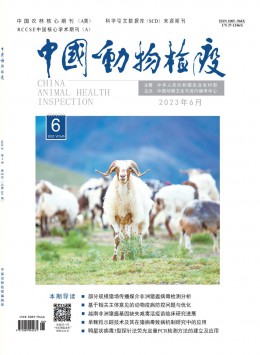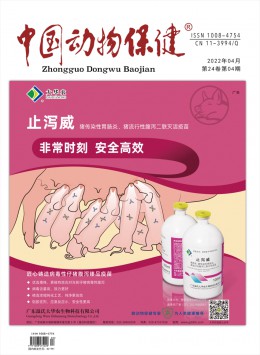動物行為學研究方法精選(九篇)
前言:一篇好文章的誕生,需要你不斷地搜集資料、整理思路,本站小編為你收集了豐富的動物行為學研究方法主題范文,僅供參考,歡迎閱讀并收藏。

第1篇:動物行為學研究方法范文
【關鍵詞】藥物和針刺;大鼠行為學;研究進展
doi:10.3969/j.issn.1006-1959.2010.05.335 文章編號:1006-1959(2010)-05-1330-02
行為醫學,顧名思義,可以理解為研究人的行為的醫學。具體地說,是研究與動物或者人的行為有關的一切知識和技術,從行為入手,來揭示生物的生命活動、健康與疾病的本質、規律,探索診斷、治療、預防疾病、增進健康的行為科學技術和方法。有關行為醫學的研究已經被廣泛開展,本文僅對近一年來以大鼠為實驗對象,通過使用藥物和針刺等外加刺激來研究其對大鼠一系列行為學治標產生影響的研究進行簡要的總結,并對其給予初步的分析。對藥物和針刺等外加刺激對于行為學研究的前景作以展望。
1.藥物對大鼠行為學的影響
張紅巖等[1]使用雌激素作為外加刺激,觀察雌激素對于偏頭痛模型大鼠發病時其行為學的改變。研究結果表明:雌激素能減少中腦導水管周圍灰質區5-羥色胺陽性神經元的激活,減輕偏頭痛模型大鼠的行為學改變。張俊慧[2,3]應用復方消疲悅意飲作為刺激,觀察了其對實驗性慢性疲勞大鼠行為學的影響。結果顯示造模組造模后大鼠水平及垂直運動次數明顯減少,力竭游泳時間縮短,鼠尾懸掛不動時間延長(P
行為學的變化與各個系統的生理功能密不可分。各個系統的機能受到各種因素的影響發生改變的同時,行為學也會發生變化。各種藥物通過不同的途徑恢復機體的正常功能的同時,對行為學治標也起到了一定的改善。反過來,正常的行為學體系,也就為機體的正常生理學穩態提供了基本保證。如果機體行為學發生變化,正常的生理功能也很難保持在良好狀態。這就為今后各種疾病的預防和治療提供了新的途徑。
2.針刺對大鼠行為學的影響
針刺,作為祖國醫學寶庫中的一朵奇葩,數千年來一直唄廣泛使用,對于各個領域疾病的治療和預防都起到了不俗的效果。最新研究表明針刺在行為學研究領域也有良好的療效。
朱書秀[6]采用Meyne核注射微量A131-40制備動物模型,選取百會、太溪、足三里電針治療,以Morris水迷宮評價大鼠學習記憶能力,免疫組化法觀察海馬區IL一1p、TNF-Ot的表達。觀察電針對阿爾茨海默病大鼠學習記憶及海馬區IL一113、TNF-Ot的影響,探討了電針治療的作用機理。結果表明模型組海馬區IL一1p、TNF-Ot的量增加。學習記憶能力減退。經電針治療后,IL一113、TNF-Ot的量較模型組減少,學習記憶能力增強。電針可顯著改變AD模型大鼠的學習記憶能力,降低海馬IL一113、TNF-Ot的含量。羅文舒[7]將大鼠隨機分為空白組、模型組、西藥組、針刺1組和針刺2組,采用長期不可預見性中等強度應激結合孤養造成大鼠抑郁癥模型,分別測定大鼠糖水消耗量以及行為學的改變。借以觀察針刺督脈的基礎上加用足太陽經穴對抑郁癥大鼠的療效,結果與模型組相比,針刺督脈和足太陽經治療組的糖水消耗量增加,行為學評分升高。說明針刺督詠和足太陽經可以改變抑郁模型大鼠行為學異常,在治療抑郁癥方面有一定優勢。李麗萍[8]采用針刺百會、太沖穴對慢性應激抑郁模型大鼠行為學變化進行了觀察研究。結果顯示造模21天后各組大鼠的水平運動和垂直運動得分均較正常組明顯減少,體重增加減慢,糖水消耗量降低;而針刺治療組與阿米替林組均可顯著增加大鼠水平運動和垂直運動得分,使體重增加,糖水消耗量增加,改善大鼠的抑郁狀態,各治療組間差異不顯著。說明針刺可以改善慢性應激抑郁模型大鼠的抑郁狀態。倪麗偉[9,10]使用Cnstina Tassore報道的方法并加以改進復制偏頭痛大鼠模型,造模成功后分別給予相應針刺或藥物處理,采用時間分段計數法觀察造模后大鼠的行為癥狀變化。結果顯示針刺和尤舒均能顯著改善偏頭痛模型大鼠的行為學癥狀且療效相似。說明針刺可顯著改善偏頭痛模型大鼠的行為學癥狀。
以上報道可以看出,針刺穴位可以對很多疾病起到改善作用。針刺通過調節機體的功能,能夠同時改善機體行為學的變化,進而進一步緩解機體功能。針刺作為一種損傷小、副作用小的方法,避免了由于長期藥物治療的副作用,可以作為今后行為學治療的重要方法。
3.研究展望
世界衛生組織關于健康的定義是:健康不僅指一個人沒有疾病或虛弱現象,而是指一個人生理上、心理上和社會上的完好狀態。這就是現代關于健康的較為完整的科學概念。現代健康的含義是多元的、廣泛的,包括生理、心理和社會適應性3個方面,其中社會適應性歸根結底取決于生理和心理的素質狀況。心理健康是身體健康的精神支柱,身體健康又是心理健康的物質基礎。良好的情緒狀態可以使生理功能處于最佳狀態,反之則會降低或破壞某種功能而引起疾病。身體狀況的改變可能帶來相應的心理問題,生理上的缺陷、疾病,特別是痼疾,往往會使人產生煩惱、焦躁、憂慮、抑郁等不良情緒,導致各種不正常的心理狀態。作為身心統一體的人,身體和心理是緊密依存的兩個方面。而行為學正式研究這一領域的學科,我們通過藥物、針刺,以及其他各種療法的根本目的也就是改善機體的功能,說到底就是改善行為學。所以,對于行為學的研究還只是剛剛開啟了大門,今后的研究還有待于進一步的開拓新方法,拓展新領域。相信隨著醫學的發展,將會有更多的研究成果被報道,更好的為人類真正意義的健康服務。
參考文獻
[1] 張紅巖.雌激素對于偏頭痛大鼠行為學改變及中腦導水管周圍灰質5-HT表達的影響.吉林大學學報(醫學版)[J],2008,34(1):131-134.
[2] 張俊慧,胡兵,沈思鈺.復方消疲悅意飲對實驗性慢性疲勞大鼠行為學的影響[J].醫學研究生學報,2008,21(8):817-819.
[3] 劉雨桃,石遠凱,孫燕.慢性疲勞綜合征[J].癌癥進展,2007,5(2):209-214.
[4] 劉學,李瑞香.凝血酶對大鼠腦出血后腦水腫和行為學變化的影響[J].中國校醫,2008,(22)4:405-407.
[5] 李滿生.壽聰膠囊對老年癡呆模型大鼠行為學及過氧化氫酶,單氨氧化酶的影響[J].中國中醫藥信息,2008,(15)10:34-35.
[6] 朱書秀.電針對阿爾茨海默病模型大鼠行為學及海馬區IL一1p、TNF-OL的影響[J].陜西中醫學院學報,2008,(31)4:55-57.
[7] 羅文舒.針刺督脈和足太陽經對抑郁模型大鼠行為學的改善作用[J].中醫藥導報,2008,(14)6:1-3.
[8] 李麗萍.針刺對慢性應激抑郁模型大鼠行為學的影響[J].針灸臨床雜志,2008,(24)6:50-52.
第2篇:動物行為學研究方法范文
通過這次的《組織行為學》講座,我了解到組織行為學是研究組織中人的行為與心理規律的一門科學,其實更是一直與人溝通與人交流的一種方式和方法。它是行為科學的一個分支,隨著社會的發展,尤其是經濟的發展促使了企業和組織的發展進步,組織行為學越來越受到人們的重視。“溝通,從心開始”為主題的講座,令深深感受到組織行為學的魅力,建立有效溝通,完善工作方法。
通過課程,使我更加客觀的看待每個人自身的優點和缺點,然而不是所有的人在任何時候都會揚長避短、知己克己、取長補短,在生活、工作中,我們有可能不了解自己,不了解他人,不了解某個場合的某種情況,所以會有生活、工作中的種種不順心或者不愉快,小矛盾、大干戈油然而生。而事后,我們靜下來的時候也許還會抱怨,也許會反思,自己的不對或他人的不是。這其中就涉及到組織行為學中許多觀點。在現實的工作群體中,我們首先要進行反思自身問題,善待他人,他人也會善待自己。我們每個個體是相互交融在一起的,無論是家庭的一員還是作為團隊的一員,我們要處理好團體與個體關系,切同存異,實現共同進步。
人是理性動物,也更是感情動物。很多時候人做事情都是會被感情所左右的,要想通過溝通達成意見的一致就要學會傾聽別人的想法,也要站在別人的立場上去思考問題。心存他人,尊重他人,這樣才可以得到他人的尊重和認可。當做一件事情或完成一個任務,各部門或各人之間有分歧的時候,需要去積極溝通和化解分歧,但是溝通并不等于只去表達你自己的認知和看法,以得到別人的贊同,而是要用一種尊重的態度去聆聽各部門或每個人的觀點,然后結合自己的想法找出分歧之處,,用最好的方式去向對方表達你的觀點和看法,最后征求對方的意見已達到最后的一致。
最后要感謝王延駿和李可永等教授和老師辛苦授課和講解,也衷心的感謝新疆農業大學精心為我們組織了一次“溝通,從現在開始”的為主題的講座,讓我們更深入了解了組織行為學的魅力和精髓所在。
第3篇:動物行為學研究方法范文
[關鍵詞] 嗅覺; 嗅覺障礙; 評估方法; 動物實驗; 文獻綜述
[中圖分類號] R339.12 [文獻標識碼] A [文章編號] 1671-7562(2010)04-0434-04
doi:10.3969/j.issn.1671-7562.2010.04.041
嗅覺是人體原始的感覺功能之一,它同視覺、聽覺一樣,是人體捕獲外界信息的特殊裝置。嗅覺還可以通過中樞神經系統影響人的情緒、調節生命周期。嗅覺障礙患者對周圍的事物不感興趣,反應平淡,生活質量下降,更可以造成精神上的壓抑或憂郁。王鴻等[1]報道用T&T測試法測試了1 035例慢性鼻竇炎鼻息肉患者,86.3%的患者有嗅覺功能障礙,與患者的主訴有極顯著的差異,說明嗅覺功能改變沒有受到患者的注意。近幾年隨著人們對生活質量要求的提高,對嗅覺障礙的關注程度有了很大的提高。
嗅覺評估不僅僅是要判斷嗅覺功能是否正常,還需要進一步判斷嗅覺障礙的程度、性質、部位等因素,如果能提示病因以及預后則更有臨床、實驗應用的價值。在動物實驗中關于嗅覺功能的研究已經有了較長的歷史,出現了多種實驗方法,但是目前為止還沒有一個全面、客觀、高特異性的金標準方法出現,本文就目前動物實驗中的常見的嗅覺評估方法進行一個概括性的介紹。
1 行為學方法
動物實驗和臨床試驗的最大區別在于動物無法準確地和實驗者交流,所以行為學方法在動物實驗中就顯得極為重要。嗅敏動物的學習記憶能力、尋食能力等與嗅覺有很高的相關性,可以觀察、記錄其行為學的改變,從而判斷其嗅覺功能的變化。目前報道較多的可以評估嗅覺功能的行為學方法有以下幾種。
1.1 埋藏食物小球實驗(buried food pellet test,BFPT)
BFPT是目前最常用于檢測動物嗅覺功能的行為學檢測方法[2]。目前比較通用的方法由Nathan等[3]于2004年報道,他的實驗中使用找尋食物小球等待時間作為數據進行統計分析,即從小鼠被隨機放置于盒子中開始,到小鼠揭開食物小球并用它的前爪或牙齒抓住食物小球的時間,如果5 min(300 s)內小鼠未找到食物小球,即被移走。林靜等[4]以300 s(5次測試的平均值)內未找到食物小球作為判定小鼠存在嗅覺功能障礙的標準,并認為以300 s作為分組標準是合理的。
1.2 嗅覺測量儀
Slotnick等[5]利用行為學原理設計出一種用于動物實驗的嗅覺測量儀,可以通過改變氣味的濃度后觀察動物的行為學變化來評價其嗅覺。該系統經眾多實驗驗證其對動物嗅覺的檢測是有效的[6],因操作方便且可進行多種設計,此方法被廣泛應用于動物嗅覺功能的評估。
1.3 雙瓶實驗
有研究證實小鼠、大鼠在分辨某些物質的時候主要是依賴于嗅覺而非味覺,例如鹽酸、鹽酸奎寧(quinine HCl, QHCl)等有一定揮發性的物質 [7]。因嗅覺障礙時動物分辨飲用水和實驗溶液的能力下降,通過兩種溶液被動物飲用的程度可以評估動物嗅覺障礙的程度。
1.4 幼鼠超聲發聲實驗
新生小鼠嗅覺的產生比其他的感覺要早。新生小鼠嗅到成年鼠窩的氣味時可發出一種超聲作為回應,檢測這種超聲的出現與否可以判斷其嗅覺功能是否正常[8]。Lemasson等[8]用3-甲基吲哚來破壞新生小鼠的嗅上皮,結果成功地證實了該檢測方法的可行性。而且在該實驗中發現由于被破壞嗅覺的小鼠無法正確識別,其生存率大大降低,證明了嗅覺對新生小鼠有極其重要的作用。
行為學方法在動物實驗的嗅覺評估中有很重要的作用,歷史悠久、技術成熟,實驗方法較為簡單,實驗裝置花費較少,對嗅覺功能的初步評估價值較為肯定(尤其是埋藏食物小球實驗和Slotnick的嗅覺測量儀),可行性及可重復性較高。需要注意的是本類實驗受個體差異影響較大,實驗前應經預評估剔除先天差異比較大的個體,而且樣本量不宜過小,有時候還需對動物進行預先的訓練。為保證實驗的客觀性,需要很好地進行實驗設計與控制,有時連晝夜節律等變化的影響都需要考慮在內。行為學測試結果對嗅覺功能評估只是一個綜合的結果,對嗅覺障礙程度、部位等的判斷較差,如果能結合嗅覺誘發電位等客觀檢查可以做到更加客觀、可信。在過去的實驗中行為學測試往往與組織學檢查相結合,既增加了實驗的客觀性,又為進一步研究嗅覺產生機制或嗅覺障礙的原因提供了基礎。
2 客觀評估方法
嗅覺的感受、傳導是個比較復雜的過程,氣味分子通過鼻腔到達嗅黏膜后被其表面的黏液所吸附,進而在黏膜層中擴散,到達嗅細胞。達到閾濃度的氣味分子可刺激嗅細胞產生嗅覺電位,這是其感受過程。產生的嗅覺電位通過嗅神經穿過篩骨篩板,到達嗅球,其內有第2級神經元,再通過嗅束傳導至初級嗅皮質及皮質內側核,而后至海馬回的內嗅皮層即次級嗅皮層,神經沖動引起大腦皮層的激活才能最后引發嗅覺。嗅覺功能的客觀評估方法包括了對嗅覺感受、傳導通路上各種指標,例如影像學、電生理學、組織學等的測量。目前動物實驗中使用較多的及可能有較大發展前景的客觀評估方法包括以下幾類。
2.1 組織學方法
這里的組織學是泛指解剖取組織后進行的所有檢查,包括大體解剖學、病理學、免疫學、分子生物學等諸多學科的檢查方法。嗅覺系統的改變既可以由病變本身引起也可以是因為嗅覺障礙后的退行性變引起。組織檢查比結構影像檢查更有評估價值,因其可以更好地提示病因,也利于更好地研究嗅覺通路和嗅覺障礙產生的機制。目前組織學方法在動物實驗中有很廣泛的應用,從部位選擇上看整個嗅覺傳導通路包括從嗅黏膜直到海馬回的內嗅皮層都有報道,從實驗方法上看更是復雜多樣,最常用的幾種方法有如下幾種。
2.1.1 病理學檢查
這是早期免疫學技術及分子生物學技術還不是很發達時常用的檢查手段,在早期嗅覺研究中有較多的應用,在嗅覺障礙的動物標本上可以看到細胞凋亡、空泡等變化,雖然特異性較差,但是也能提供宏觀的信息,現在常常和其他檢查方法一起使用,例如在陳志宏等的實驗中在進行其他檢查之前使用了HE染色方法檢查了模型小鼠的嗅上皮,發現其嗅上皮變薄,其中的感覺神經元的細胞核層數變少[9]。
2.1.2 蛋白及核酸表達的檢查
對相應組織中某些標志性蛋白及核酸的檢查可以間接地反映嗅覺功能及提示嗅覺障礙的原因。例如用免疫組化方法檢查嗅覺通路中嗅標記蛋白(olfactory marker protein, OMP)、酪氨酸羥(tyrosine hybroxylas, TH)、一氧化氮合酶(nitric oxide synthase, NOS)、c-Fos蛋白等標記物在許多文獻中都有記載。Buron等[10]在丙酮吸入誘導的嗅覺障礙實驗中使用了嗅上皮組織的OMP及增殖細胞核抗原(proliferating cell nuclear antigen,PCNA)作為觀察指標,發現丙酮對于嗅上皮的損傷是有選擇性的。有學者使用多巴胺及細小白蛋白作為標記物進行免疫組化檢查,發現失嗅動物模型的嗅球中含多巴胺及細小白蛋白的神經元細胞數量明顯減少,認為通過該失嗅動物模型可以對嗅球萎縮進行定量描述,提示多巴胺及細小白蛋白在嗅球中的表達對于失嗅的作用[11]。c-Fos蛋白可反映大腦組織活動程度,對c-Fos蛋白的觀察可以一定程度上起到功能磁共振的作用[12]。
2.2 電生理學方法
2.2.1 嗅電圖
將電極直接置于嗅區黏膜,當其接受嗅素刺激時記錄到的一種慢相負性電位變化稱為嗅電圖,目前普遍認為它是單個嗅細胞電位變化的總和,嗅電圖已經在動物實驗中得到證實[13]。嗅電圖最大的缺陷在于雖然其對嗅黏膜損傷引起的嗅覺障礙有較大的意義,但是對于黏膜后傳導通路以及嗅球、海馬回等中樞病變導致的嗅覺障礙沒有什么評估價值。
2.2.2 嗅覺腦電圖
嗅覺誘發腦電圖是指在給予嗅刺激時,實驗對象的腦電圖可發生變化,Hirano等[14]用狗做實驗時成功地獲得了該變化,在他的實驗中發現腦電圖的快波對嗅覺功能的意義較大。嗅覺誘發腦電圖又相繼在大鼠等其他動物身上得到了驗證[15]。嗅覺腦電圖產生的機制還不是很明確,而且其特異性不是很高,故目前在動物實驗中研究、應用的較少。
2.2.3 嗅覺誘發電位
又稱為嗅覺事件相關電位(olfactory event-related potentials,OERP),最早是用電刺激動物嗅黏膜時在頭皮特定部位記錄到穩定的腦電位的變化,該方法經過一段時間的發展后認為其和自然嗅覺之間有一定的差距,故逐漸被化學氣味誘導的嗅覺誘發電位所取代,目前使用的已經比較少。早期化學氣味刺激除了有嗅覺刺激外還常常伴有物理刺激及對三叉神經的化學刺激,這些非嗅刺激干擾了正常嗅覺誘發電位的獲得。隨著僅能興奮嗅覺系統而不興奮三叉神經系統的化學物質如香草醛等,以及Kobal式嗅覺刺激器的出現,嗅覺誘發電位研究成為嗅覺研究領域的熱點。嗅覺誘發電位儀至少包括嗅覺刺激器及腦電采集系統,測量時需要在電聲屏蔽室進行,且需要給予一定的白噪聲掩蔽刺激探頭釋放刺激時產生的干擾噪聲。目前動物嗅覺誘發電位各波的具體來源以及與疾病間的相互關系還不清楚,嗅覺誘發電位的出現是否意味著動物確實產生了嗅覺還不能肯定,所以用來證明嗅覺傳導通路是否暢通比較可行[16],而暫不能用于嗅性疾病的定位、定性診斷。嗅覺誘發電位應該是最可能成為動物嗅覺評估客觀標準的檢查方法。
3 影像學方法
3.1 嗅覺系統結構影像檢查
有研究證明嗅球及嗅束等神經結構的生長與周圍神經沖動的輸入有關[17],所以嗅覺障礙后嗅覺系統各部位可有一定的不依賴于年齡的結構改變,通過磁共振影像檢查可以發現這些改變,例如嗅球體積變小、嗅溝缺失或變淺、嗅束缺失等現象,從而間接評價嗅覺功能。
3.2 嗅覺系統功能影像檢查
這是目前嗅覺研究的熱點方向之一,主要技術有功能性磁共振成像(fMRI)、PET成像和腦信號的光學成像等。
3.2.1 功能磁共振檢查
功能磁共振檢查技術有很多,用于嗅覺系統功能的fMRI技術主要是(blood level dependent fMRI, BOLD fMRI),當氧合血紅蛋白的比例增加時或去氧血紅蛋白含量減少時,T2信號縮短效應減弱,表現為MR信號增強。嗅覺功能成像既能反映血流的變化,也能反映神經元活動的代謝變化,近些年在研究神經功能方面發揮著巨大的作用,特別是fMRI無放射暴露,可反復測試,且時間、空間分辨率要優于PET成像,故是目前嗅覺功能成像的主要方法。在大鼠實驗中已經證實,7 T的fMRI能夠顯示氣味刺激后大鼠嗅球的活化[11]。其空間分辨率很高,對于研究嗅覺相關皮層的定位、嗅覺功能障礙情況下嗅覺相關皮層反應的變化等有極大的應用價值。有學者擬通過信息技術將嚙齒類動物嗅球的激活圖像編成二維的氣味圖(OdorMap,OM)及氣味圖數據庫(OdorMap Database,OMDB)以利于嗅覺工作者對嗅覺系統的研究[18]。功能磁共振應用在動物實驗的嗅覺評估中需要注意的是:首先動物是不能配合磁共振檢查的,故需要在麻醉下進行;其次磁共振是強磁場環境,故嗅覺刺激裝置不能由金屬制成。
3.2.2 腦功能光學成像
腦功能光學成像是近年來神經外科的熱點研究方向,目前主要的實驗技術有激光散斑襯比成像和內源信號光學成像。而應用于嗅覺功能檢查的主要是內源信號光學成像,這里所指的內源信號,并不是神經元所表現出來的電信號,而是指由神經元活動所引起的有關物質組分、運動狀態的改變而導致其光學特性的變化,在與某些特定波長的光量子相互作用后,得到的包含了這些特性的光信號,包括:血紅蛋白信號、氧合血紅蛋白信號、光散射特征信號等[19-20]。許多生理性過程如血紅蛋白氧合度、細胞色素的氧合狀態、神經膠質和神經元腫脹、功能性血流量改變等變化,都會影響到組織光反射特性的改變。通過探測反射光的變化量,就可以獲得這種特異性的內源光學信號。內源光學信號成像在動物實驗中已用于多種腦功能皮層功能的檢查,比如視覺(貓、小鼠等)、軀體感覺皮層(大鼠、貓、松鼠猴等)、聽覺皮層(南美栗鼠、貓、雪貂等)。Bathellier等[21]在實驗中使用了內源光學信號原理和突觸素熒光標記兩種方法分別獲得了香芹酮、苯甲酸甲酯刺激后大鼠嗅球的激活情況,在內源光學信號成像下,激活的嗅小球反光率下降,呈相對的冷色調,而在熒光標記實驗中激活區域熒光反應較強。雖然內源光學信號成像的時空分辨率都較高,但是其穿透腦皮層的能力受限(大約數百微米),所以對于深層腦組織的觀察就沒有什么效果了。由于內源光學信號的確切生理來源至今沒有定論,所以為了闡述內源光信號對應的生理意義及其與神經元電活動的關系,還需要與其他方法進行對比研究。
從其他感覺的評估方法來看,功能磁共振和誘發電位是研究的發展方向,但目前嗅覺產生、傳導機制尚未完全明了,相關檢查技術尚處于起步階段,還需要進行大量的研究。目前的嗅覺研究可以根據不同的實驗要求及實驗條件選擇不同的實驗方法及實驗方法的組合。嗅覺誘發電位及功能磁共振檢查由于其初期投入較大,對硬件及技術條件要求較高,開展難度較大,在國內只有少數醫院在從事這方面的實驗。行為學方法操作簡單,技術成熟,效果肯定,有很強的實用價值。組織學方法對于機理的研究十分重要,并且隨著對嗅覺認知的加深,越來越多的標記物被發現,評估方法也越來越豐富。如果可以出現一種簡單易行的嗅覺評估方法,那么可以極大地促進嗅覺的研究。
[參考文獻]
[1] 王鴻,張偉,韓德民,等.1035例慢性鼻竇炎鼻息肉患者嗅覺功能測試結果的分析[J].耳鼻咽喉-頭頸外科,2002,9(5):272-274.
[2] EDWARDS D A, THOMPSON M L, BURGE K G. Olfactory bulb removal vs peripherally induced anosmia: differential effects on the aggressive behavior of male mice[J]. Behav Biot, 1972, 7(6): 823-828.
[3] NATHAN B P, YOST J, LITHERLAND M T, et al. Olfactory function in apoE knockout mice[J]. Behav Brain Res, 2004, 150(1-2): 1-7.
[4] 林靜,魏永祥,王向東,等.變應性鼻炎伴嗅覺障礙小鼠嗅黏膜的觀察[J].中國耳鼻咽喉頭頸外科,2008,15(8):465-468.
[5] SLOTNICK B M. Animal cognition and the rat olfactory system. TRENDS in cognitive[J]. Science, 2001, 5:5.
[6] XU W, SLOTNICK B. Olfaction and peripheral olfactory connections in methimazole-treated rats[J]. Behav Brain Res, 1999, 102: 41-50.
[7] UEBAYASHI H, HATANAKA T, KANEMURA F, et al. Acute anosmia in the mouse: behavioral discrimination among the four basic taste substances[J]. Physiol Behav, 2001, 72: 291-296.
[8] LEMASSON M, DELBé C, GHEUSI G, et al. Use of ultrasonic vocalizations to assess olfactory detection in mouse pups treated with 3-methylindole[J]. Behav Processes, 2005, 68(1): 13-23.
[9] 陳志宏,倪道鳳,高揚,等.流感病毒感染后小鼠嗅感覺神經元的凋亡與再生[J].中國耳鼻咽喉顱底外科雜志,2004,10(6):324-326.
[10] BURON G, HACQUEMAND R, POURI G, et al. Inhalation exposure to acetone induces selective damage on olfactory neuroepithelium in micep[J]. Neurotoxicology, 2009, 30(1): 114-120.
[11] KIDA I, XU F, SHULMAN R G, et al. Mapping at glomerular resolution: fMRI of rat olfactory bulb[J]. Magn Reson Med, 2002, 48(3): 570-576.
[12] ZOU Z, LI F, BUCK L B. Odor maps in the olfactory cortex[J]. Proc Nat Acad Sci U S A, 2005, 102(21): 7724-7729.
[13] WAGGENER C T, COPPOLA D M. Naris occlusion alters the electro-olfactogram: evidence for compensatory plasticity in the olfactory system[J]. Neurosci Letters, 2007, 427(2): 112-116.
[14] HIRANO Y, OOSAWA T, TONOSAKI K. Electroencephalographic olfactometry (EEGO) analysis of odour responses in dogs[J]. Res Vet Sci, 2000, 69(3): 263-265.
[15] HERNANDEZ-GONZALEZ M. Prefrontal and tegmental electrical activity during olfactory stimulation in virgin and lactating rats[J] Physiol Behav, 2004, 83(5): 749-758.
[16] WEI Y, MIAO X, XIAN M, et al. Effects of transplanting olfactory ensheathing cells on recovery of olfactory epithelium after olfactory nerve transection in rats[J]. Med Sci Monit, 2008, 14(10): 198-204.
[17] BUSCHHUTER D, SMITKA M, PUSCHMANN S, et al. Correlation between olfactory bulb volume and olfactory function[J]. Neuro Image, 2008, 42: 498-502.
[18] LIU N, XU F, MARENCO L, et al. Informatics approaches to functional MRI odor mapping of the rodent olfactory bulb: OdorMapBuilder and OdorMapDB[J]. Neuroinformatics, 2004, 2(1): 3-18.
[19] SEM′YANOV K A, TARASOV P A, SOINI J T, et al. Calibration-free method to determine the size and hemoglobin concentration of individual red blood cells from light scattering[J]. Appl Opt, 2000, 39(31): 5884-5889.
第4篇:動物行為學研究方法范文
1鳥類腦大小對覓食創新的影響
很多動物行為學家都認為,在動物前腦大小與覓食創新之間存在著神經生物學聯系[3],因為前腦與動物行為的可塑性密切相關。通常是前腦越大,覓食創新能力越強。根據這一基本原理,Lefebvre等人(2004)[4]研究了北美洲和大不列顛群島上各種鳥的前腦大小與覓食創新之間的關系。所謂覓食創新是指能取食和利用新的食物種類或采用新的覓食技巧。為此,研究人員利用了9種鳥類學雜志所提供的資料,收集了322種覓食創新(或覓食新技能),其中126種覓食新技能屬于大不列顛群島上的鳥類,192種屬于北美洲的鳥類(表1)。這些覓食創新包括銀鷗捕到小嚙齒動物后將它們扔到巖石上摔死或沉入水中淹死;也包括普通烏鴉利用過路的小汽車把堅果壓碎,這相當于把小汽車當鉗子使用[5]Lefebvre等人曾計算過這些創新行為在不同類群(目鳥類中的分布情況,同時還分析過不同類群鳥類在大不列顛和北美洲的常見程度或稀有程度。在掌握各種鳥類覓食創新行為的同時,研究人員還獲得了這些鳥類前腦相對大小的資料[6]。無論是在大不列顛群島還是北美洲,鳥類前腦的大小都與覓食創新密切相關。凡是前腦比較大的鳥類,其覓食創新行為也更為常見。雖然有很多覓食創新都是在一次觀察中發現的,但對多達322例覓食創新行為的大規模分析中,發現在前腦大小與覓食創新之間確實存在著直接的關系,這表明,這是動物行為學中一個重要而有意義的研究新領域。Sol等人(2006,2007)[7-8]曾研究過鳥類腦子較大是否對其生存和生殖有利的問題。長期以來人們一直未經驗證地認為,腦相對較大有助于提高動物的適合度(fitness),特別是當種群進入一個新的陌生環境的時候,這時覓食創新對動物的生存和生殖就特別重要[9-10]。Sol等人曾研究了646例物種被引入新環境的實驗(涉及196種鳥),其中大多是研究人員將一種鳥引入一個島嶼或原分布區以外的地方[11-12]。研究人員還收集了196種鳥有關腦大小的資料,并根據鳥大腦就大,鳥小腦就小的基本事實作了相應的校正,最終發現,在鳥的腦大小和能在新環境中成功定居之間存在著正相關關系,這是因為腦子較大的鳥類具有更強的覓食創新能力,這種能力可大大提高鳥類的食物攝取率,從而能提高鳥類的生存機會和生殖機會。
2動物有計劃未來的能力嗎?
學習是動物借助于個體生活經歷和經驗使自身行為發生適應性變化的過程,從這一學習的定義可以看出,任何當前發生的行為都是與此前的生活經歷和經驗相關聯的。如果動物也能像我們人類那樣能夠根據先前的經歷和經驗預測和計劃未來的話,那一定會大大增加自身的存活機會和適合度。目前屬于這方面的研究還很少,因為長期以來人們一直認為計劃未來是人類獨有的能力,這也是人類與所有其他動物存在的一個主要差異[13]。然而隨著時間的推移已變得越來越清楚的是,動物也具有一些一度被認為是人類所獨有的行為,例如使用工具和純粹是有利于未來生存的行為,這促使動物行為學家開始對動物有沒有計劃未來的能力產生興趣并進行研究。動物行為學家認為,要想確認計劃未來的行為必須滿足兩個條件:首先該行為必須是創新的或新穎的,它不是某些本能行為的表現,例如:遷飛行為有很多本能成分,雖然顯示有一定的“計劃性”,但不是我們要求的那樣;其次,計劃未來的行為不一定與動物當前的動機狀態相關,而必定會涉及到未來某一時刻的動機狀態。下面介紹一個最新的關于動物計劃未來的研究實例,這就是松鴉為了計劃未來而改變其覓食行為的現象[14]。松鴉是進行這類研究的一個極好的物種,因為它具有令人難以置信的記憶力,它生活在高海拔地區,常常要為未來貯藏大量的食物,每個個體每年大約要貯藏3萬多粒種子,冬季和春季幾乎完全依賴秋季貯藏的種子為生。松鴉不僅能記住它們貯藏食物的地點,而且還十分注意當它們在貯藏食物時誰在觀察它們。在這種情況下,它們此后會把食物重新挖出來并進行深埋,以防這些食物被偷食[15]。Raby等人(2007)[16]利用一個簡單而巧妙的實驗檢驗了松鴉是否具有計劃未來的能力。研究人員為松鴉提供兩個隔室,其中一個隔室中含有食物松子,另一個隔室中沒有食物,每天早晨松鴉只能見到和進入一個隔室,在連續6天的實驗期間,兩個隔室是交替出現的,各出現3次。每天實驗的前一天晚上,不為松鴉提供任何食物,因此它們在見到隔室期間是處于饑餓狀態。6天實驗結束后,每天天黑前兩小時,只為松鴉提供一點點食物,使它們得不到可供貯藏的種子。此后再為它們提供一個備有大量松子的場所,并提供兩個以前曾多次拜訪過的隔室,但現在每個隔室內又安裝了一個能貯藏食物的“貯食杯”,使鳥類在天黑前可以把食物貯藏起來,如果它們愿意這樣做的話。實驗結果發現,在兩個隔室中它們總是在其中的一個隔室中貯藏更多的食物(松子),而這個隔室是它們以前拜訪過的那個不含有食物的隔室,這說明在越是缺乏食物的環境中,它們貯藏食物的行為就表現得越明顯,這對于保障未來的生存是很重要的,這實際上是“為未來著想的一種行為適應性”。接下來Raby等人又安排了一個更加有趣的實驗,他們訓練松鴉使其知道在一個隔室中可以吃到花生,而在另一個隔室中可以吃到谷粒,松鴉對這兩種食物都很愛吃。當按照上述同樣的方法進行實驗時,發現松鴉在含有花生的隔室中貯藏的食物是谷粒,而在含有谷粒的隔室中貯藏的是花生,這表明松鴉很注意并喜歡使它們的食物多樣化,在它們為未來準備食物時也是遵循這一使食譜多樣化的原則。除鴉科鳥類(如松鴉和星鴉)外,其他動物是否也有“為未來著想”和計劃未來的行為,目前還研究得很少,尚有待于擴展研究范圍。
3腦海馬大小與貯食行為的關系
為了了解鳥類覓食行為與空間記憶力的問題,Hea-ley和Krebs(1992)[17]曾研究了7種鴉科鳥類的腦海馬大小與貯藏食物的能力之間的關系。他們之所以選擇研究腦海馬是因為已知鳥類大腦的這個區域與食物的回收(復得)有密切關系。同時,鴉科鳥類也是研究這一問題的最好對象,因為在鴉科鳥類的各個物種之間,貯食行為的表現各不相同,便于用比較研究法進行分析。有些鴉科鳥類根本就不貯藏食物,而另一些鴉科鳥類則 必須在長達9個月期間完全依賴貯藏的食物為生[18-19]。Healey和Krebs[17]研究了兩種幾乎不貯藏食物的鴉科鳥類,即寒鴉(Corrus monedula)和紅嘴山鴉(Pyr-rhocorax graculus),還研究了4種貯藏食物的鴉科鳥類,它們是禿鼻烏鴉(Corvus frugilegus)、歐洲烏鴉(Corviscorone)、喜鵲(Pica pica)和紅嘴藍鵲(Cisia erythro-rhyncha),此外還研究了1種不僅貯藏食物,而且在長達9個月期間必須記住6 000~11 000粒種子埋藏地點的鴉科鳥類,即歐洲松鴉(Garrulus grandarius)。當檢查貯食行為與腦海馬大小之間關系的時候,發現這些鳥類都表現出明顯的正相關關系,即海馬體積越大,貯藏食物的行為就越發達,這表明:海馬大小是鴉科鳥類空間記憶力和貯食行為進化的關鍵因素。此外,動物行為學家還研究了在一個物種內部個體之間海馬大小與貯食能力之間的關系,例如:生活在食物短缺環境中的個體比生活在食物豐富環境中的個體具有更發達的貯食能力,腦海馬的體積也比較大[20]。這就是說,當鳥類生活在嚴酷環境中的時候,自然選擇有利于增強它貯存食物的能力和此后重新找回這些食物的能力,也有利于海馬體積的增大和海馬神經元數量的增加。Pravosudo及其同事用來自食物豐富的科羅拉多州和來自食物短缺的阿拉斯加州的兩個黑冠山雀(Po-ecile atricapilla)種群檢驗和證實了這一觀點。他們從阿拉斯加州的安克雷奇(Anchorage)捕捉15只活鳥,從科羅拉多州的溫澤(Windsor)捕捉20只活鳥,然后將它們帶回加利福尼亞大學的實驗室,45天后測定這些鳥類貯藏種子之后再重新找到這些種子的能力。當為這些鳥提供可供貯藏的種子時,發現來自阿拉斯加(食物短缺)的山雀比來自科羅拉多(食物豐富)的山雀要貯藏更多的種子。同樣重要的是,阿拉斯加山雀不僅比科羅拉多山雀貯藏更多的種子,而且它們重新找回這些種子的效率也更高,所犯錯誤也最少。從海馬大小的角度進行比較,雖然阿拉斯加山雀比科羅拉多山雀的個體小體重輕,但其海馬的體積卻比后者大,而且海馬所含有的神經元數量也更多。有趣的是,在不給予兩地山雀貯藏食物的機會的情況下,它們之間海馬大小的差異仍然存在,這表明:貯藏行為本身并不會使阿拉斯加山雀的海馬變大,相反,兩地山雀之間的差異應當是自然選擇作用于海馬大小的結果。目前,有關這一領域的大量工作正在進行之中。
第5篇:動物行為學研究方法范文
【摘要】 目的 建立兔脊髓缺血再灌注損傷模型,觀察其行為功能改變,探討發生脊髓缺血再灌注損傷的時間窗, 為治療提供實驗數據。方法 40只新西蘭大白兔隨機分為假手術組、缺血15min組、缺血30min組、缺血45min組和缺血60min組,每組8只。采用腎下腹主動脈阻斷法,建立脊髓缺血再灌注模型。術后采用Reuters法對后肢感覺和運動反射功能評分,Jacobs 和Rivlin法對后肢運動功能分級。 結果 術后Reuter評分值總體變化趨勢為缺血60min組>缺血45min組>缺血30min組和缺血15min組。Jacobs和Rivlin評分值總體變化趨勢為缺血15min組和缺血30min組>缺血45min組>缺血60min組。 結論 本模型是一種較理想的脊髓缺血損傷模型。阻斷腹主動脈血流30,45,60min可以模擬出輕、中、重不同程度局部脊髓缺血再灌注損傷。脊髓缺血時間越長,后肢運動功能損害越明顯,脊髓缺血再灌注損傷的時間窗為30-45min。
【關鍵詞】 脊髓 缺血/再灌注損傷 時間窗 行為醫學
Evaluation of the functions of hindlimb in rabbit graded spinal cord ischemia/reperfusion injury by ethology
Liu Chong1,Shi Jin-shan1,Zhang jian-ping1,Feng ya-ping1,Zhang fang-xiang1,FANG Hua1,2*,Wang Quan-yun2.(1.Department of Anesthesiology Guizhou Provincial People,s Hospital, Guiyang 550002,China;2.Department of Anesthesiology,West China Hospital,Sichuan University,Chengdu 610041,China)
【Abstract】 Objective To make a ischemia/reperfusion injury model of spinal cord and investigate the relationship between time window of spinal cord ischemia/reperfusion injury and extent of function changes of behavior in rabbits. Methods 40 rabbits were equally randomized into the sham-operation group、ischemia for 15 min、30min、45min and 60min group. The spinal cord ischemia-reperfusion model was made by clamping the infrarenal aortic in rabbits. The sensory、motor and reflex functions of spinal cord were evaluated after reperfusion by the Reuters method and neurological functions of hind extremities were scored after reperfusion through the Jacobs and Rivlin method. Results The Reuter’s score during reperfusion from the highest to the lowest in the order was generally ischemia for 60 min group、ischemia for 45 min group、ischemia for 30 min group( andischemia for 15 min group ). The Jacobs and Rivlin score during reperfusion from the highest to the lowest in the order was generally ischemia for ischemia for 30 min group( andischemia for 15 min group ) 、ischemia for 45 min group、60 min group. Conclusions It is a very good model of ischemia-reperfusion injury in spinal cord.Mild , moderate and severe ischemia-reperfusion injury of regional spinal cord ischemia can be simulated by the occlusion of the infrarenal aortic for 30 minutes , 60 minutes and 90 minutes respectively.The motor funtion of rabbit hind limbs was significantly worsened due to prolonging the ischemic time. The time window of spinal cord ischemia-reperfusion injury is limited from 30 to 45 min.
【Key words】 Spinal cord;Ischemia-reperfusion injury;Time window;Behavior
在脊髓損傷動物模型的研究中,建立臨床相似性好、可重復、可操作、更客觀的動物模型后,對機體的運動、感覺、反射功能的神經行為學評價能夠直接反映脊髓的損傷程度及外周行為功能的改善情況[1]。本實驗通過建立不同脊髓損傷程度的新西蘭大耳白兔脊髓缺血再灌注損傷模型,觀察后肢運動及感覺情況并進行神經行為學評分,旨在進一步探討脊髓缺血再灌注損傷后脊髓功能恢復的水平及其與神經行為學評分之間的關系。
材料與方法
1 實驗動物分組及動物模型的建立:4-6月齡健康純種新西蘭大耳白兔40只(四川大學實驗動物中心提供),體重2.0-2.5kg,雌雄不拘,隨機分為五組,假手術組(C0)、缺血15min組(C15)、缺血30min組(C30)、缺血45min組(C45)和缺血60min組(C60),每組8只。采用左腎動脈下方腹主動脈阻斷法建立脊髓缺血再灌注損傷模型[2]。證實鉗夾點以下腹主動脈搏動完全消失后,各缺血組分別阻斷15min、30min、45min和60min后松夾,恢復灌注,逐層關腹,再灌注均為48小時。術中用溫鹽水紗布敷蓋腹腔臟器,肛溫維持在36-37℃,麻醉維持根據手術過程中動物的反應,追加初始劑量的1/3-l/2。動物麻醉后即耳中動脈穿刺持續監測平均動脈壓(MAP)、心電圖(ECG)、經皮脈搏氧飽和度(SpO2)及溫度。i-STAT血氣分析儀(美國)測定動脈血氣。C0只進行手術操作,不阻斷腹主動脈,后期手術操作同缺血組。動物清醒后歸籠飼養,飼養室保持室溫在24℃-26℃。
2. 觀察指標:后肢運動功能評分參照Jacobs分級標準[1],采用5分制法測定再灌注6小時、12小時、24小時和48小時動物后肢運動功能。以0~3級為截癱標準,計算出各組動物的截癱率。 后肢感覺和運動反射功能評價根據Reuter等評分標準[2],綜合評價再灌注6小時、12小時、24小時和48小時動物后肢感覺、運動反射功能。參考文獻[3]略加改進,測定再灌注6小時、12小時、24小時、48小時斜面臨界角度均值及再灌注48h斜板障礙率。斜板由兩塊100cm×40cm矩形的合金板通過鉸鏈于一端相連而成,一塊作底板,另一塊為移動板,表面鋪約6 mm厚的橡膠墊。板從水平位置(00) 起繞軸旋轉,斜板基底部放置一測量角度的量角器,斜面角度可以測出。兔俯臥于移動板上,身體縱軸與斜板橫軸垂直放置,頭側逐漸抬高以增大移動板與底板間的角度,直至出現動物向下滑行時,記錄臨界角,每例均測試3次,取其平均值。以評價動物后肢的負重能力。為了排除麻醉及手術等影響,采用斜板功能障礙率來評價,計算公式參照文獻如下[4]:斜板障礙率(%)=(麻醉前度數-脊髓損傷后度數)/麻醉前度數×100%。
3 統計學方法:數據資料以均數±標準差(x±s)表示,多組間神經行為學評分采用非參數檢驗(Kruskal-wallis)進行分析,使用 Mann-whitney u檢驗比較。斜板障礙率的比較采用卡方檢驗。統計軟件為SPSS13.0。
結 果
1. 動物模型生理參數:手術過程中各組肛溫、MAP、心率、SpO2、呼吸頻率、血糖和血氣分析指標均在正常范圍內。
2. 術后動物一般情況觀察:動物手術后2h內完全清醒。觀察時間內,所有動物手術切口均愈合良好,無感染,均無意外死亡。根據Jacobs分級標準[1],假手術組動物后肢均未發生癱瘓。缺血15min組和缺血30min組動物術后自主排便排尿功能逐漸恢復,再灌注48h時后肢均無明顯癱瘓,截癱率均為0(0/8);缺血45min組和缺血60min組動物術后活動減弱, 飲食量減少,伴有腹部脹氣、大小便功能障礙及雙后肢肌張力明顯降低等表現,再灌注48h時兩組動物后肢出現為不同程度、不同類型的截癱,可分為伸肌癱瘓、屈肌癱瘓和混合性癱瘓三種類型,截癱率分別為87.5%(7/8)和100%(8/8)。
3. 后肢運動功能的評估 :Jacobs分值越高動物后肢功能越接近正常。除假手術組各時間點后肢功能正常外,隨著脊髓缺血程度的不同,各缺血組同時間點Jacobs分值顯示出不同的差別;缺血15min組與缺血30min組各時間點組內和組間比較差異均無統計學意義(P>0.05);缺血45min組與缺血60min組同時間點Jacobs分值逐漸下降,組間比較差異均有統計學意義(P
表1 各時間點各組動物Jacobs評分均值(x±s,n=8)
組 別 再 灌 注 時 間(h)
6 12 24 48
C0 5.00±0.00 5.00±0.00 5.00±0.00 5.00±0.00
C15 4.82±0.57 4.22±0.69 4.19±1.05 4.50±0.53
C30 4.57±0.66 4.26±0.95 4.13±0.61 4.15±0.83
C45 2.51±0.82 2.35±0.65 2.16±0.84 2.68±0.81
C60 0.58±0.63■ 0.67±0.79■ 0.59±0.85■ 0.55±0.51■
注:與同期缺血15min組比較,#P<0.05,P<0.01; 與同期缺血30min組比較,
P<0.05,P<0.01;與同期缺血45min組比較, P<0.05,■P<0.01
4. 后肢感覺和運動反射功能評價:參照Reuter評分法[2],正常家兔后肢感覺和運動反射功能評分值為0分,全癱時為11分,分值越高,說明后肢感覺和運動反射功能障礙越嚴重。假手術組各時間點后肢Reuter分值均為0分;再灌注各時間點,各缺血組動物后肢Reuter分值表現為不同程度的改變;缺血15min組與缺血30min組各時間點組內和組間比較差異均無統計學意義(P>0.05);脊髓缺血時間超過30min,各時間點Reuter分值逐漸增加,缺血45min組與缺血60min組間比較差異有顯著性(P
表2 脊髓缺血再灌注損傷后肢感覺和運動反射功能評分值(x±s,n=8)
組別 再 灌 注 時 間(h)
6 12 24 48
C0 0 0 0 0
C15 2.42±0.57 2.29±0.43 1.90±0.34 2.32±0.38
C30 3.38±0.61 2.84±0.36 3.12±0.58 2.42±0.76
C45 8.76±0.65 8.51±0.79 7.85±0.51 8.26±0.62
C60 10.84±0.77■ 10.63±0.45■ 10.23±0.67■ 9.63±0.62■
注:與同期缺血15min組比較,#P<0.05,P<0.01; 與同期缺血30min組比較,P<0.05,P<0.01;與同期缺血45min組比較, P<0.05,■P<0.01
5 斜面臨界角測定:假手術組平均斜面臨界角度為67.82±7.650。再灌注各時間點,各缺血組動物斜面臨界角度表現為不同程度的改變;缺血15min組與缺血30min組各時間點組內和組間比較差異均無統計學意義(P>0.05);脊髓缺血時間超過30min,各時間點斜面臨界角度逐漸下降,缺血45min組與缺血60min組間比較差異有顯著性(P
6 再灌注48h斜板障礙率:假手術組48h斜板障礙率為0。各缺血組隨著脊髓缺血時間的不同,再灌注48h時動物斜板障礙率逐漸增加。缺血15min組、缺血30min組、缺血45min組和缺血60min組斜板障礙率分別為(5.73±1.47)%、(5.95±1.36)%、(41.56±5.78)%及(59.72±5.47)%。見表3。
表3 各時間點各組動物斜面臨界角度均值(0,x±s,n=8)及再灌注48h斜板障礙率(%)
組 別 再 灌 注 時 間(h) 再 灌 注48h斜板障礙率
6 12 24 48
C0 67.47±7.28 69.26±9.51 65.84±7.25 64.38±8.93 0
C15 65.73±8.03 67.23±6.62 66.47±6.82 66.48±7.35 5.73±1.47
C30 62.72±6.25 69.85±7.15 64.37±8.43 63.63±6.39 7.95±1.86
C45 42.51±6.37 43.26±7.37 44.57±7.44 41.32±8.56 41.56±5.78
C60 36.54±4.53■ 35.63±5.63■ 33.28±6.05■ 34.81±5.33■ 59.72±5.47■
注:與同期缺血15min組比較,#P<0.05,P<0.01; 與同期缺血30min組比較,P<0.05,P<0.01;與同期缺血45min組比較, P<0.05,■P<0.01
討 論
神經行為學評估是判斷缺血再灌注損傷脊髓功能變化的重要指標。由于動物對神經行為學檢測手段的應答具有一定的局限性,故既往脊髓損傷后的神經功能評估側重于運動功能的研究方法可能影響其實驗結果的可靠性及可比性。經過國內外學者多年的努力,提出了多種不同的評定標準和方法,主要包括Jacobs評分[1]、Reuter評分[2]、Rivlin斜板試驗[3,4]、改良Tarlov評分[5]、BBB (Basso、Beaffic、Bresnahan)評分[6]、Baffourur評分[7]、Gale聯合評分[8]等。這些評分標準從不同的方面對脊髓損傷程度提出了相對客觀的標準。本研究結合實際情況,聯合采用Rivlin斜板試驗、Jacobs和Reuter評分法綜合判斷包括后肢運動、感覺、反射以及負重能力等幾方面的變化。
本研究發現,雖然Jacobs分級法能夠比較準確地評定脊髓缺血再灌注損傷平面以下的軀體自主動物功能,但過于籠統,不夠精細,對于鼠、兔等較低級的哺乳動物,有些指標難以觀察;實驗一結果顯示,脊髓缺血再灌注模型對脊髓前角運動神經元和后角感覺神經元的影響存在差異。因此,Reuter評分法雖然采分點多,能夠綜合反映后肢細微的神經功能變化,但不能靈敏辨別后肢癱瘓的程度,且易于主觀判斷,可能導致實驗結果偏差;Rivlin法也有其自身的局限性,它主要從動物雙下肢靜態力量的角度為研究出發點,對于后肢的動態活動能力未加以考慮。因此,本實驗聯合運用Rivlin斜板試驗、Jacobs和Reuter評分法,將多種觀察指標和方法綜合起來,從靜態及動態角度采用雙盲、雙人獨立觀察記錄,最后取均值進行脊髓功能綜合評分[9]。此外,本實驗根據自身重力對抗原理,自制適用于新西蘭大耳白兔的合金斜板,利用自身重力將斜板試驗用于兔脊髓缺血再灌注后后肢負重能力變化的研究。本研究表明,將這三種實驗方法相結合,克服了使用某一評分方法的跨度較大、跳躍分布以及連續性較差的缺點,不僅彌補各自的不足,還可以提高實驗評分方法的靈敏度,實驗結果更為準確地、可靠地、相對客觀地綜合評定動物運動、感覺等多方面功能。
本實驗顯示,假手術組后肢Jacobs和Ruter評分術后均完全正常,且48h斜板障礙率為0。在各缺血組中,缺血15min組和缺血30min組動物術后自主排便排尿功能逐漸恢復,觀察時間內斜面臨界角度、Jacobs及Ruter分值均無顯著改變,且再灌注48h時也無明顯排便排尿功能障礙以及后肢均無明顯癱瘓,截癱率均為0(0/8),說明脊髓本身具有一定的修復功能,動物后肢功能在再灌注6h時能夠恢復正常, 至再灌注48h時也未見明顯的行為功能障礙,提示脊髓的自修復功能可能與脊髓缺血再灌注損傷程度有一定的關系,脊髓缺血短于30min雖然可能引起輕度脊髓缺血再灌注損傷,但隨著脊髓血供恢復,后肢感覺和運動功能可以完全恢復到損傷前的水平。缺血45min和缺血60min組同時間點 Jacobs和Ruter分值分別表現為明顯降低和升高,而斜面臨界角逐漸下降,再灌注48h時斜板障礙率逐漸增加,表現為不同類型的截癱、大小便功能障礙及雙后肢肌張力明顯降低,兩組動物截癱率分別為87.5%(7/8)和100%(8/8),與此同時,術后動物活動減弱, 飲食量減少,且伴有腹部脹氣等表現,說明左腎動脈下腹主動脈阻斷45min和60min不僅能夠直接造成脊髓中、重度的脊髓缺血再灌注損傷,還可能間接引起腹腔和/或盆腔臟器不同程度的缺血損傷,提示脊髓缺血45min和60min后即使血流恢復,后肢感覺和運動功能也不能恢復至損傷前的水平。
術后神經行為學變化與脊髓缺血再灌注損傷程度密切相關。脊髓再灌注損傷程度與缺血時間有關, 即缺血時間超過一定限度后再灌注就會引起脊髓組織不可逆性損傷,在此時限內恢復血供則有治療意義, 此時限即被稱為再灌注損傷治療時間窗。本研究顯示,各缺血組同時間點后肢神經肌肉功能強弱總體變化趨勢為缺血15min組和缺血30min組>缺血45min組>缺血60min組,說明阻斷腰段脊髓血流15min、30min、45min和60min可以建立不同損傷程度的脊髓缺血再灌注模型,模擬輕度、中度、重度和/或完全性脊髓運動傳導功能障礙,輕度和中度脊髓缺血再灌注損傷可能造成不完全性脊髓運動和感覺傳導功能障礙,而重度以上的脊髓缺血再灌注損傷可能引起完全性脊髓運動和感覺傳導功能損害,造成后肢感覺和運動功能障礙,提示, 脊髓組織如在一定時限內迅速恢復供血, 神經元可能恢復功能; 如超過一定的時限(再灌注損傷時間窗),則會發生不可逆損傷,失去治療意義。“時間窗”這一概念于20世紀90年代提出,與脊髓缺血再灌注損傷的預后密切相關。脊髓缺血時間及程度、脊髓血運重建與否以及多因素介導的脊髓再灌注損傷是術后發生神經功能障礙的主要原因。本實驗中, 兔脊髓缺血30min內后肢神經行為學變化不明顯, 而脊髓缺血時間45min以上將造成后肢神經功能嚴重障礙,提示脊髓缺血再灌注損傷時間窗可能局限在30-45min之間,精確的時間點尚需要進一步的研究證實。
參考文獻
[1] Jacobs TP,Schohami E,Baze W,et al.Deteriorating stroke model:histopathology,edema and eicosanoid changes following spinal cord ischemia in rabbits.Stroke.1987,18:741-750.
[2] Reuter DG,Tacker WA,Badylak SF,et al.Correlation of motor-evoked potential responses to ischemic spinal cord damage.J Thorac Cardiovasc Surg.1992,104:262-272.
[3] Rivlin AS,Tator CH.Objective clinical assessment of motor function after experimental spinal cord injury in the rat.J Neurosurg.1977,47(4) :577-581.
[4] 宋躍明,楊志明,雷驥.山莨菪堿對牽張性脊髓損傷的防治作用.中國脊柱脊髓雜志.1999,9(4):208-211.
[5] Tarlov AR,Ware JE,Greenfield S,et al.The Medical Outcomes Study.An application of methods for monitoring the results of medical care.JAMA.1989,Aug 18,2(7):925-930.
[6] Basso DM,Beattie MS,Bresnahan JC:Graded histological and locomotive outcomes after spinal cord contusion using the NYU weight-drop device versus transtion.Bperimental Neurolcgy.1996,244-256.
[7] Baffour K,Achanfa K,Kaufmn J.Synergestic effect of basic fibroblast growth factor and methiprednisolone on neurological function after experimental spinal cordinjury.J Neurosurg.1995,83:105-110.
[8] Gale K,Kerasidis H,Wrathall JR.Spinal cord contusion in the rat behavioural analysis of functional neurologic impairment.Exp Neurol.1985,88(1):123-134.
[9] Thomas AJ,Nockels RP,Pan HQ,et al.Progesterone is neuroprotective after acute experimental spinal cord trauma in rats.Spine.1999,24:2134-2138.
第6篇:動物行為學研究方法范文
摘 要:目的:觀察化瘀通絡方治療大鼠局灶性腦缺血-再灌注損傷對腦組織自由基及一氧化氮合成酶(NOS)和iNOS變化的影響。方法:制備大鼠局灶性腦缺血再灌注損傷模型,給予化瘀通絡方治療后觀察丙二醛(MDA)、超氧化物歧化酶(SOD)及一氧化氮合成酶(NOS)和誘導型一氧化氮合成酶(iNOS)的變化。結果:化瘀通絡方可顯著降低MDA含量以及iNOS和NOS活性,SOD含量升高。結論:在腦缺血再灌注損傷后, 化瘀通絡方能抑制腦缺血再灌注后脂質過氧化反應,促進自由基清除,對抗自由基損傷,提高腦組織自身抗氧化能力,降低NOS和iNOS介導腦缺血-再灌注時的神經損傷,保護腦細胞。
關鍵詞:化瘀通絡方;腦缺血-再灌注損傷模型;SOD;MDA;NOS;iNOS
中圖分類號:R285.5文獻標識碼:A文章編號:1673-7717(2011)03-0509-03
Effect of Huayu Tongluo Fang on the Expression of ROS and NOS in Brain
Tissue During the Reperfusion After Middle Cerebral Artery Occlusion in Rats
QIU Zhao-juan1,ZHU Xuan-xuan1,DA Qing-guo1,WU Xu-tong1-ZHU Wu-yuan2
(1.Affiliated Hospital of Nanjing University of Chinese Medicine,Nanjiang 210029,Jiangsu,China;
2.Nanjing University of Chinese Medicine, Nanjing 210029,Jiangsu,China)
Abstract:Objective:To observe the effect of huayutongluofang on expression of ROS,NOS and iNOS during the reperfusion after middle cerebral artery occlusion in rats. Methods:The cerebral IR rats model were established by middle cerebral artery occlusion.Treated the cerebral IR rats with huayutongluofang,then observing the changes of MDA,SOD,NOS and iNOS in brain tissue. Results:Huayutongluofang could reduce the expression of MDA,iNOS and NOS in brain tissue.While, after huayutongluofang treatment,the SOD level in brain tissue was increased.Conclusions:During the reperfusion after middle cerebral artery occlusion,huayutongluofang can restrain the Lipid Peroxidation,promote removal of oxygen free radicals, compete oxygen-free radical injury. While,runhoukaiyinkeli could reduce the possibility of nerve damage,protect neural cells from injured.省略。
缺血性腦卒中(Ischemic Cerebral Stroke, ICS),中醫又稱缺血性腦中風,是一種突然起病的腦部血液循環障礙性疾病。祖國醫學將其列為“風、癆、臌、膈”四大疑難病之首。根據WHO公布的有關數據顯示,世界范圍內ICS的發病率為150~200人/10萬人口。而在我國,60歲以上老年人ICS發病率高達30%~45%,幸存者中約50%留有不同程度的后遺癥,且復發率高達40%~60%。ICS在臨床表現以猝然昏撲導致口眼歪斜、半身不遂、智力障礙為主要特征,嚴重影響患者生活質量,已成為前3位的疾病死因之一,其病因和治療藥物一直是研究熱點。近年來,中藥在缺血性疾病治療中的作用逐漸得到重視。化瘀通絡法是我院神經內科經多年臨床實踐研制并應用于臨床腦梗塞病人,前期臨床研究發現化瘀通絡方能明顯改善神經功能缺損,用其治療急性腦出血60例,治療組基本痊愈12例(20.0%),顯效24例(40.0%),有效16例(26.7%),無效8例(13.3%),總有效率86.7%。顯示出滿意的臨床療效。本研究通過制備大鼠局灶性腦缺血再灌注損傷模型,探討化瘀通絡方對腦缺血再灌注損傷后腦組織自由基及一氧化氮合成酶(NOS)變化的影響。為化瘀通絡方的臨床應用提供理論依據。
1 實驗材料
1.1 實驗藥品
化瘀通絡方由葛根、當歸、補骨脂、制大黃、水蛭等組成,由江陰天江藥業有限公司提供,批號:0910119腦血康膠囊,山東昊福制藥有限公司,批號:20100202,青霉素,山東魯抗醫藥股份有限公司,批號:B091107,戊巴比妥鈉,中國醫藥上海化學試劑公司,批號:F20091216 SOD、MDA、NOS試劑盒,南京建成生物工程研究所,批號:20100406。
1.2 實驗動物和實驗用飼料
SD大鼠,雄性,280~320g,由浙江大學實驗動物中心提供,合格證號:SCXK(浙)2008-0033,實驗用飼料由江蘇省協同醫藥生物技術有限公司提供,批號20100325
1.3 實驗用儀器
電子分析天平FA10047南京市計量測試所,80-2臺式低速離心機,上海醫療器械有限公司手術器械廠,恒溫水浴箱 HH-2,國華電器有限公司 ,756PC紫外分光光度計 上海光譜儀器有限公司
1.4 實驗條件
實驗大鼠均分籠飼養,飼喂全價顆粒飼料,自由飲水,室溫(22±2)℃,55%~65%,光照適度,通風潔凈。
1.5 實驗統計
實驗數據統計處理用±s表示,采用t檢驗,用SPSS 11.0統計軟件進行統計分析。
2 實驗方法
2.1 實驗動物分組和MCAO模型的建立
選用健康雄性SD大鼠,體重280~320g,飼喂全價顆粒飼料,自由飲水,大鼠按簡化分層隨機法,隨機分為6組:(1)假手術組: 給予等量生理鹽水10mL/kg;(2)腦缺血再灌注模型組:給予等量生理鹽水10mL/kg;(3)腦血康膠囊組:0.9g/kg,10mL/kg;(4)化瘀通絡方大劑量組:16g/kg,10mL/kg;(5)化瘀通絡方中劑量組:8g/kg,10mL/kg;(6)化瘀通絡方小劑量組:4g/kg,10mL/kg。
以上除假手術組和腦缺血再灌注模型組給予等量生理鹽水,其余各組大鼠灌胃給藥,灌胃容量10ml/kg,每日一次,連續給藥7天,實驗前禁食不禁水,實驗時以水合氯醛(30mg/kg)腹腔注射,待動物完全麻醉后,仰位固定于手術臺上,頸部脫毛并消毒,于正中切開2cm,分離右側頸總動脈(CCA),頸外動脈(ECA),頸內動脈(ICA),結扎ECA和CCA近心端,于ECA和ICA分叉處在ECA上穿線打一活結。在ECA上剪一小口,插入直徑0.235mm的尼龍漁線,緩慢向分叉處插入,直到到達分叉處有阻力不能再插入為止。將ECA上活結系緊,固定漁線。剪斷ECA,輕輕提起ECA殘端使其與ECA成一直線,再緩慢將漁線向ICA插入,栓線插入深度約為(18.0±1.0)mm,在分叉處結扎,松開動脈夾,縫合皮膚,體外留少許栓線,缺血2h后將栓線抽離頸總動脈分叉處造成再灌注模型。模型成功標志:動物麻醉清醒后出現缺血側Hornor征及對側以前肢為主的偏癱。如動物無此體征或于2h后仍不清醒者剔除。假手術組只切開皮膚,分離CCA、ECA、ICA后縫合。手術后給予抗生素青霉素抗炎。繼續給藥3天。
2.2 實驗指標檢測
2.2.1 神經行為學評分 MCAO大鼠麻醉清醒后,進行行為學評分。評分標準參考Longa等5分制法(0分:無神經損傷癥狀;1分:不能完全伸展對側前肢;2分:向對側轉圈;3分:向對側傾倒;4分:不能自發行走,意識喪失。)分值越高,說明動物行為障礙越嚴重。觀察造模后3h,24h,48h,72h神經功能行為學評分,見表1
表1 化瘀通絡方對腦缺血大鼠神經行為學評分的影響
(±s)
注:與假手術組比較,P
實驗結果所示:局灶性腦缺血再灌注模型大鼠在3h、24h、48h、72h神經行為學評分高于各給藥組,具有顯著性差異;以3h神經行為學評分為重,24h~72h后神經行為有恢復,評分降低,化瘀通絡方大劑量組在24h、48h和72h的神經行為學評分與模型組比較具有顯著性差異;化瘀通絡方中劑量組在24h和48h的神經行為學評分與模型組比較具有顯著性差異;化瘀通絡方小劑量組24h有顯著性降低神經行為學評分作用,提示:化瘀通絡方對局灶性腦缺血大鼠再灌注后的神經元具有一定的保護作用,并具有減輕神經功能損傷的作用。
2.2.2 腦組織標本的制備 各組大鼠再灌注72h后,脫頸處死,斷頭后迅速取腦,將腦組織以冰生理鹽水洗凈血跡后,稱取0.1g,置2mL冰磷酸鹽緩沖液中于勻漿器中進行勻漿,將制備好5%腦組織勻漿用離心機3000r/min,4℃離心15min,取上清液測定SOD、MDA、NOS和蛋白含量。
2.2.3 化瘀通絡方對腦缺血大鼠腦組織中SOD、MDA、NOS的影響 見表2~3。
實驗結果所示:局灶性腦缺血再灌注模型大鼠腦組織中MDA含量顯著高于假手術組,SOD顯著性低于假手術組,化瘀通絡方各給藥組均可不同程度降低局灶性腦缺血再灌注大鼠腦組織中MDA含量,升高SOD活力,與模型組比較具有顯著性差異。提示:化瘀通絡方對局灶性腦缺血再灌注大鼠腦組織的保護作用與降低MDA含量和升高SOD
表2 化瘀通絡方對腦缺血大鼠腦組織中MDA含量
和SOD活力的影響(±s)
注:與假手術組比較,P
表3 化瘀通絡方對腦缺血大鼠腦組織中TNOS
和iNOS的影響(±s)
注:與假手術組比較,P
活力有關。
實驗結果提示:局灶性腦缺血再灌注大鼠腦組織中TNOS和iNOS含量明顯增高,與假手術組比較具有顯著性差異,(P
3 討 論
關于缺血再灌注引起腦神經組織損傷的機制尚不十分清楚。近年研究發現自由基及其脂質過氧化反應在腦組織缺血再灌注的病理生理過程中發揮著重要作用,是腦缺血-再灌注損傷的重要機制之一,因此,抗自由基的毒害作用成為防治缺血再灌注損傷的重要措施。MDA是脂質過氧化物的終末產物,測定其含量可反映脂質過氧化程度和自由基對腦組織損傷的程度。SOD能催化超氧化物轉變成活性較低的物質,是細胞內抗脂質過氧化作用的酶性保護系統。故認為測定以上指標可綜合反映缺血再灌注后腦組織損傷與抗損傷的水平。
實驗結果表明,腦缺血-再灌注可導致腦組織發生脂質過氧化反應,使MDA生成增加、SOD活性明顯下降,顯示出自由基的毒害攻擊作用,符合當今腦缺血缺氧損傷的“自由基學說”;應用化瘀通絡方治療后,大劑量組和中劑量組均可明顯提高SOD活力,使 MDA生成減少。提示,化瘀通絡方能抑制腦缺血再灌注后脂質過氧化反應,對抗自由基損傷,促進自由基清除,提高腦組織自身抗氧化能力,保護腦細胞。
研究表明腦缺血/再灌流早期NO增多,對腦起保護作用;但腦缺血/再灌流的損害則與再灌流期NOS大量增多有關。缺血再灌注會引起誘導型NOS(iNOS)高表達。NOS是一組同功酶,廣泛存在于各類組織、細胞中。研究表明NOS有3種亞型:①神經元型(nNOS)。活性依賴于Ca2+升高,最早在神經元中發現,生理狀態下有表達,病理狀態下可被誘導,在腦缺血神經元損傷的早期階段起重要作用,腦缺血后10min活性上升,3h達高峰,介導腦缺血時早期神經元損傷。②內皮型(eNOS)。活性依賴于Ca2升高,最早在內皮細胞中發現,生理狀態下有表達,病理狀態下可被誘導,通過維持腦血流,在腦缺血后起保護作用,腦缺血后 1h活性上升,24h達高峰。③誘導型(iNOS)。活性不依賴于Ca2,最早在巨噬細胞中發現,在腦缺血神經元損傷的晚期階段起重要作用,腦缺血后 12h活性上升,48h達高峰,介導遲發性神經原損傷。
實驗結果表明,腦缺血2h再灌注 72h后,腦組織NOS活性和iNOS活性持續增高。化瘀通絡方可通過降低NOS和iNOS活性而介導腦缺血-再灌注時的神經保護作用。
腦缺血再灌注損傷的發生與多種因素有關,研究表明化瘀通絡方治療腦缺血再灌注損傷機制可能與其清除氧自由基,抑制一氧化氮合成酶的產生,抗細胞凋亡,從而保護腦組織有關。
參考文獻
[1] 何清,周聯生,趙靜,等,依達拉奉對腦缺血再灌注大鼠腦組織超氧化物歧化酶、一氧化氮、丙二醛水平的影響[J].齊齊哈爾醫學院學報,2008,29(18):2191-2193.
[2] 余萬桂,鄧德明,等.連心堿對大鼠腦缺血/再灌注后NOS及c-fos蛋白表達的影響[J].長江大學學報,2007,4(3):220-222.
[3] 李榮,吳偉,楊開清,等,腦醒噴鼻劑對再灌注損傷腦組織自由基及一氧化氮合成酶變化的干預作用[J].中國中醫藥信息雜志,2003,10(7):23-25.
[4] 王天路,孫風艷,周良輔.一氧化氮合酶抑制劑在大鼠局灶性腦缺血再灌注損傷中的保護作用[J].中華醫學雜志,1997,77(10):787-788.
[5] Heistad DD. Oxidative Stress abd Vascular Disease: 2005 Duff Lecture[J]. Arterioster Thromb Vase Biol,2006,26(4):689-695.
[6] Jung KH, Chu K, Ko SY, Lee ST, Sinn DI, Park DK, et al. Earlyintravenous infusion of sodium nitrite protects brain against in vivoischemia-reperfusion injury[J]. Stroke,2006,37:2744-2750.
第7篇:動物行為學研究方法范文
【關鍵詞】 益智寧神口服液/藥理學;抽動—穢語綜合征/中藥療法;神經遞質;疾病模型,動物;大鼠;色譜法,高壓液相
抽動—穢語綜合征(tourette syndrome,ts),又稱多發性抽動癥,是一種兒童期發病的慢性神經精神障礙性疾病。wWW.133229.cOM臨床表現主要為突然、快速、反復、非節律性、不自主和刻板的運動性抽動和發聲性抽動,還可能伴有各種行為紊亂、強迫觀念與行為、認知障礙等,可不同程度地干擾和損害兒童的認知功能,影響社會適應能力。本病病因尚未明確,具有明顯的遺傳傾向,多見于4~12歲的兒童,患病率約為005%~3%,近年來發病呈明顯上升趨勢,男孩多于女孩[1]。廣東省中醫院兒科在臨床實踐中運用自擬方益智寧神口服液治療該病,取得了較好的療效[2]。本實驗應用亞氨基二丙腈腹腔注射建立抽動—穢語綜合征模型大鼠,觀察該藥對模型大鼠行為學和神經生物學的影響,現報道如下。
1材料與方法
11實驗動物spf級sd大鼠60只,28~30d齡,體質量(250±10)g,雌雄各半。由廣東省醫學實驗動物中心提供(許可證號:粵監證字2008d006,批號:0037766)。
12實驗藥品亞氨基二丙腈(iminodipropionitrile,idpn)購自alfa aesar公司(批號:c7323a),中藥益智寧神口服液(由廣東省中醫院提供,批號:080201),對照藥物為氟哌啶醇(上海信誼九福藥業有限公司,批號:08031121)。
13儀器及試劑lc26a 型高效液相色譜儀、spd26av 熒光檢測器、c2r4a 數據處理機均為日本島津公司產品,脫水機、包埋機、切片機和生物顯微鏡等設備為德國leica公司產品,微量組織勻漿器為millipore公司產品,zh藍星c/s型腦立體定位儀,高氯酸、乙二胺四乙酸二鈉(edtana2)均為分析純,甲醇為色譜純,對照品由中國藥品生物制品所提供。
14模型復制參考wakata[3]的方法,將亞氨基二丙腈溶解于生理鹽水,稀釋成濃度100mg/ml,給藥途徑為腹腔注射,劑量為150mg·kg-1·d-1,每天1次,共用7d。
15分組及給藥選用sd大鼠隨機分為4組:空白組和模型組各10只,中藥組和西藥組各20只,每組均雌雄各半。治療組在造模后第2天開始給藥,中藥組按20kg的兒童每天口服20ml益智寧神口服液的比例計算,每只大鼠灌胃約2ml/d;西藥組按20kg的兒童每天口服氟哌啶醇片1mg的比例計算,每只大鼠灌胃約015mg/d,連續14d。
16大鼠行為觀察[4]采用觀察評分,每次至少觀察1h,主要誘發癥狀為運動行為和刻板運動。(1)運動行為評分:0分:安靜或正常活動;1分:能過度興奮;2分:探究行為增加;3分:跑;4分:跑和跳;(2)刻板運動(或定型運動)評分:0分:無刻板運動;1分:旋轉行為;2分:頭和頸部的上下運動過多;3分:頭、頸部的上下運動過多加旋轉行為;4分:頭向側擺合并頭和頸部的上下運動過多。
17神經遞質水平檢測[5]第14天將所有實驗大鼠迅速斷頭處死,借助腦立體定位儀,取右腦海馬組織及邊緣系統(包括紋狀體、隔核、層殼核、基底節、齒狀回),精確稱質量,置入1ml處理液(含01mol/l高氯酸和05g/ledtana2)中,微量組織勻漿器冰溶下勻漿,4℃冰凍離心10000r/min,取上清液置入-20℃保存。采用高效液相色譜法測定多巴胺(da)和去甲腎上腺素(ne)濃度。測樣時,室溫下解凍,進樣20μl,以峰面積外標法定量。
18統計學方法采用spss130和sas913版本進行統計學處理和分析,各組神經遞質水平檢測數據分別進行方差齊性和正態分布檢驗,方差不齊采用秩和檢驗,檢驗水平α=005。
2結果
21各組行為學觀察和評分各組治療前后運動行為和刻板運動積分見表1。模型組行為學評分與空白組比較,差異有顯著性意義(p<001),表明造模是成功的。
治療14d后,中、西藥組運動行為積分和刻板運動積分降低,與模型組比較差異有顯著性意義(p<005或p<001),表明中藥組和西藥組對動物行為均有明顯改善作用,中藥組效果與西藥組相仿。
22各組治療前后腦組織da、ne含量變化比較表2結果顯示:模型組腦組織da水平降低,ne水平升高,與空白組比較差異均有顯著性意義(p<001);治療14d后,中、西藥組均可顯著升高da水平,降低ne水平,與模型組比較差異均有顯著性意義(p<005或p<001),中藥組作用與西藥組相仿。表1各組治療前后運動行為和刻板運動積分比較(x±s) 表2各組治療前后神經遞質水平比較
3討論
idpn是一種中樞神經毒素,50年代以后就用于神經病理學的研究,本研究參考wakata[3]的方法復制模型,從神經生物學和行為學兩方面觀察藥物治療對ts模型動物臨床行為學典型特征的影響。idpn誘發ts模型大鼠出現明顯刻板運動和運動行為異常,如過度興奮、探究行為、異常跑跳、旋轉行為和頭頸部上下側擺等動作均具有ts臨床行為學的典型特征,有時出現連續的嗤鼻、抬舉上肢等動作,類似于人類ts患兒喉部發聲、聳肩等特征行為。本研究通過對藥物治療前后ts模型大鼠運動行為和刻板運動行為評分的比較,發現中藥組在改善動物ts典型特征行為方面效果明顯,如頭部、頸部的抽動減輕,旋轉行為明顯緩解,每次異常行為發作持續時間縮短,異常抽動次數消失,異常跑動及不規律的彈跳運動明顯減少。
雖然目前對ts的神經生物學物質基礎還未完全闡明,但基本認為中樞神經遞質,特別是da、ne、5-羥色胺(5ht)等與ts之間關系密切[5],因此,探討大腦多巴胺類神經遞質及其代謝產物的水平是證明藥物神經生物學療效的主要依據。本研究對大腦海馬區da和ne水平進行測定,結果表明:治療后中藥組da水平明顯升高,而ne水平有所下降,均趨向于正常水平。與ts有關的神經遞質包括乙酰膽堿、腎上腺素、5ht、多巴胺等,主要分布于紋狀體、隔區、藍斑、黑質等海馬、基底前腦及邊緣系統,構成復雜的神經網絡[6-8]。有關藥物治療對大腦組織不同部位和核團神經遞質水平的影響文獻報道并不一致,而且與檢測時間點有很大關系[8]。本研究結果初步表明,中藥治療14d后,對大腦組織da和ne兩種神經遞質水平的變化產生顯著影響,對于治療過程中以及停藥后神經遞質的動態變化仍需進一步觀察。
益智寧神口服液的主要組成為:熟地黃、黃芪、白芍、龍骨、遠志、石菖蒲、五味子。其中熟地,其味甘,性微溫,入心、肝、腎經,本品味厚氣薄,為補血生精、滋陰補腎之要藥,《珍珠囊》曰:“主補血氣,滋腎水,益真陰”。黃芪,味甘,性微溫,入脾、肺經,質輕升浮,為升陽補氣之圣藥。可補中氣、益元氣、溫三焦、壯脾陽,選以補脾益氣。白芍味苦、酸,性微寒,入肝經,既能養血斂陰,又能平抑肝陽,還能柔肝止痙;而龍骨味甘、澀,性微寒,入心、肝經,專攻平肝潛陽、鎮靜安神之用,兩者搭配,養陰寧心,平肝潛陽。五味子性溫,五味具備,酸能收斂,苦能清熱,咸能滋腎,溫而不燥,既能益氣生津,補腎養心,用其養心滋腎安神;遠志、石菖蒲有安神益智、化痰開竅之功效。諸藥配伍,具有健脾滋腎、平肝熄風、寧神益智、化痰開竅之功效。氟哌啶醇是目前治療ts的最有效藥物之一[9],療效確切,但因副作用明顯使其臨床應用受到限制,通過實驗結合臨床用藥發現,益智寧神口服液的療效與氟哌啶醇無明顯差異,且療效更加穩定,易為患兒及家屬接受。
【參考文獻】
[1] freeman r d, fast d k, burd l, et a1.an international perspective on tourette syndrome:selected findings from 3500 individuals in 22 countries[j].dev med child neurol, 2000,42( 7 ):436.
[2]楊麗新.培土抑木法治療小兒抽動穢語綜合征36例[j].浙江中西醫結合雜志,2001,11(9):575.
[3] wakata n, araki y, sugimoto h, et al. idpninduced monoamine and hydroxyl radical changes in the rat brain[j]. neurochemical research, 2000, 25(3):401.
[4]劉智勝.小兒多發性抽動癥[m]. 北京:人民衛生出版社, 2002:237-238.
[5]劉師蓮,張兆蓮,劉賢錫,等. 大鼠腦組織單胺類遞質及其代謝產物的檢測方法研究[j].山東大學學報:醫學版,2002,40(5):472.
[6]wong d,brasic j,singer h,et a1.pet imaging of dopamine and serotonin in tourette syndrome[j]. neuroimage,2006,31(4):162.
[7]swerdlow n r, sutherland a n. using animal models to develop therapeutics for tourette syndrome[j]. pharmacol ther,2005, 108(3):281.
第8篇:動物行為學研究方法范文
關鍵詞:安宮牛黃丸;缺血性中風;大腦中動脈梗死大鼠模型;細胞因子
中圖分類號:R743 R289.5 文獻標識碼:A 文章編號:1672-1349(2011)06-0710-03The Protective Effect of Angong Niuhuang Pill on Experimental Cerebral Ischemia
Liu Zongtao,Sha Dike,Liu Yuanxin,et al
The Affiliated Hospital of Traditional Chinese Medicine,Xinjiang Medical University (Urumqi 830000)
Abstract:Objective To investigate the protective effect of Angong Niuhuang pill on experimental cerebral ischemia and its mechanism.Methods Rats were randomly divided into five groups:Sham group,model group,Angong Niuhuang pill group,western medicine group,Chinese traditional medicine with western medicine group.The models with focal cerebral ischemia of rat were established by the suture occluded method.Neurology evaluation was studied at 6 h,24 h,48 h and 72 h after middle cerebral artery occlusion(MCAO)and cerebral ischemia.The coefficient of brain and water content in whole brain were examined.The level of serum interleukin 10 (IL-10) in abdominal aorta was detected by enzyme linked in ununosorbent assay.Results Within four days of MCAO,different degrees of motion disturbances were observed in all rats except sham group.The coefficient of brain,the water content of whole brain and the level of serum IL-10 were obviously increased (P
Key words:Angong Niuhuang pillischemic apoplexymiddle cerebral artery occlusioncytokine缺血性中風,西醫屬于缺血性腦血管病范疇,是由于血管阻塞引起腦缺血損傷而致局灶或全腦的功能障礙。具有發病率高、致殘率高、死亡率高和復發率高等特點,是威脅人類健康的重大疾病之一。中醫認為,中風其本在肝腎虧虛,其標在風、火、痰、瘀、虛;它們在發病過程中相互影響,相互作用,臨床出現煩躁神昏譫語,此乃為腦血管意外急性期的關鍵所在【sup】[1]【/sup】。Framingham流行病學研究結果,65%的中風為大腦中動脈供血區的血管堵塞所致,與之相應,大腦中動脈區局部缺血模型是實驗性腦梗死研究中最常用的一種模型,其中大腦中動脈(MCA)線栓模型應用最為廣泛【sup】[2]【/sup】 。因此本實驗采用MCA線栓法造成局灶性腦缺血大鼠模型,探討中藥制劑安宮牛黃丸灌胃配合西藥甘露醇與呋塞米針靜脈給藥對缺血性中風急性期大鼠腦水腫變化規律、血清細胞因子及神經行為學改變的影響,為中西醫結合并治,多途徑給藥治療缺血性中風提供實驗依據。
1 材料與方法
1.1 動物 健康雄性SD大鼠60只,3月齡,體重250 g~300 g,由新疆實驗動物研究中心提供,實驗動物使用許可證號:SYXK[新]2003-0003號環境溫度控制在25℃~30℃飼養,空氣濕度維持在(50±5)%,用燈照使動物體溫維持在(37.5±0.5) ℃。
1.2 藥物與試劑 安宮牛黃丸由北京同仁堂科技發展股份有限公司制藥廠提供(國藥準字Z11020076,批號9013181),實驗前用蒸餾水配制成所需濃度;20%甘露醇、胞磷膽堿鈉注射液,由上海旭東海普藥業有限公司提供。呋塞米(速尿)由上海美優制藥有限公司提供。白細胞介素(IL)-10定量ELISA試劑盒,購于上海瑞齊生物科技有限公司(批號20101221)。
1.3 儀器 顯微手術器械(上海醫療手術器械廠);電子分析天平(MC,京制0000249號,北京賽多利斯儀器系統有限公司);電熱恒溫鼓風干燥箱(上海精宏實驗設備有限公司);TGL-16C臺式高速離心機(金壇市醫療儀器廠制造);酶標分析儀(美國伯樂公司制造,X Mark);參照文獻【sup】[3]【/sup】,選用4-0尼龍線,栓線直徑為0.25 mm~0.28 mm。
1.4 方法
1.4.1 動物分組與給藥 將SD大鼠隨機分為假手術組、模型組、安宮牛黃丸組(中藥組)、西藥組、中西藥組;假手術組、模型組均給予等容量生理鹽水3 mL灌胃;安宮牛黃丸組給予3 mL安宮牛黃丸溶解液灌胃治療;西藥組給予20%甘露醇2.625 mL、速尿0.42 mg尾部靜脈注射;中西藥組在西藥組治療的基礎上加用安宮牛黃丸(將1.134 g安宮牛黃丸加入54 mL水中溶解稀釋);每只3 mL溶解液灌胃。動物造模后連續灌胃給藥4 d,于末次給藥后分別處死。
1.4.2 大鼠局灶性腦缺血模型的建立 參照文獻采用線栓法制備大腦中動脈(MCA)局灶性腦缺血模型【sup】[4]【/sup】:大鼠腹腔注射麻醉(即阿托品、氯胺酮、安定各2 mL、4 mL、4 mL,稀釋至20 mL,0.75 mL/100 g)后,仰臥固定,頸部正中切口,鈍性分離甲狀腺,將其上翻并用無菌紗布保護,分離右側頸總動脈(common carotid artery,CCA)、頸內動脈(internal carotid artery,ICA)、頸外動脈(externa1 carotid artery,ECA),并在ECA、ICA分叉處結扎ECA,右側CCA剪口約0.2 mm的側“V”字形切口,插入頭端燒成圓鈍形直徑為0.28 mm的尼龍線,使線栓經過CCA分叉處進入ICA,到達MCA起始處,進線長度約(18.5±0.5) mm,感覺有阻力時即停止插入,并向外稍拉出一點即可實現MCA起始端堵塞MCA所有的血液來源,然后將CCA連同尼龍魚線一起結扎,扎緊備線,甲狀腺復位,關閉并縫合皮膚切口。假手術組大鼠接受相似手術處理,但是不插入線栓。縫合皮膚,實現MCAO造模完成。動物入選標準(按Longa五級評分法【sup】[5]【/sup】取神經功能行為評分為1分、2分、3分、4分的動物):選擇蘇醒后左上肢屈曲、行走時向左側旋轉或左側肢體癱瘓的大鼠為栓堵成功者進行實驗,否則視為栓堵失敗,棄之不用。模型成功后,分別于MCAO后6 h、24 h、48 h、72 h進行神經功能行為評分;大鼠在斷頭處死前取血清檢測IL-10含量:各組大鼠麻醉后腹主動脈取血法分別取全血約5 mL,室溫下放置20 min,然后以2 500 r/min離心10 min,小心吸取上清液即為血清標本(溶血標本不用),常溫下保存備用。
1.5 觀察指標及測定方法
1.5.1 神經功能行為學評分測定 動物蘇醒后,按Longa法【sup】[5]【/sup】對其神經功能行為進行5分制評分:0分,無明顯神經病學癥狀;1分,不能完全伸展左側前爪;2分,向左側旋轉;3分,行走時向左側傾倒;4分,不能自行行走。
1.5.2 腦系數 動物稱重,造模給藥4 d后斷頭取腦,沿腦橋上界水平切斷,取全腦稱重,腦系數全腦重÷體重×100%。
1.5.3 腦組織含水量的測定 造模給藥4 d后斷頭取腦,去除小腦、嗅球、低位腦干等,用濾紙吸干表面水分,稱量腦濕重,105 ℃烘烤24 h至恒重,精確稱量干重,采用Elliot【sup】[6]【/sup】公式計算腦組織含水量。
1.5.4 血清IL-10含量測定 酶聯免疫吸附法(ELISA法)檢測IL-10含量,具體操作步驟參照試劑盒說明書。
1.6 統計學處理 實驗數據以均數±標準差(x±s)表示,采用SPSS 17.0軟件做統計分析;組間比較用單因素方差分析及Student-Newman-Keuls test統計。
2 結 果
2.1 一般狀態 假手術組大鼠麻醉蘇醒后精神好,反應靈活,活動度大,全部存活,未見明顯對側肢體活動障礙。其余各組術后4 d精神均較造模前差,反應遲鈍,飲食較前減少,自潔能力下降,扎堆蜷縮,均出現不同程度的肢體活動障礙,而以模型組為甚;其中模型組、西藥組、中西藥組分別有2只大鼠造模后半小時左右死亡;中藥組有1只大鼠造模后昏迷不醒,于第2天死亡。
2.2 體重指數 大鼠造模前稱重(g)為基礎值,造模后第1天、第2天、第3天、第4天分別稱重,取各時間點體重與基礎值之比,即體重指數。與模型組比較,各組動物術后均有體重漸回升的過程;而假手術組體重上升較明顯,與其他各組比較有統計學意義(P
2.3 神經功能行為學評分 假手術組大鼠都沒有神經功能行為學癥狀,而模型組、中藥組、西藥組、中西藥組大鼠則有不同程度的神經功能行為學表現。與模型組大鼠比較,中藥組、西藥組、中西藥組均可降低大鼠的神經功能行為學評分(P
2.4 各組對局灶性腦缺血大鼠腦水腫的影響(見表3) 與模型組比較,其他各組大鼠腦系數、腦組織含水量明顯降低(P
表3 各組對大鼠腦系數、腦組織含水量的影響(x±s)%
2.5 各組對局灶性腦缺血大鼠血清IL-10的影響(見表4) 與假手術組比較,各造模組IL-10均明顯升高(P
表4 各組對大鼠血清IL-10表達的影響(x±s)ng/L
3 討 論
安宮牛黃丸是我國傳統藥物中久負盛名的良方,是中醫治療中風之要藥。安宮牛黃丸出自清代吳鞠通《溫病條辨》,素有“救急癥于即時,挽垂危于頃刻”的美譽,由牛黃、水牛角濃縮粉、麝香、珍珠、朱砂、雄黃、黃連、黃芩、梔子、郁金、冰片等11味藥組成。具有清熱解毒、豁痰開竅的功效,主治熱病、邪入心包、高熱驚厥、神昏譫語。臨床研究表明,安宮牛黃丸制劑具有改善缺血性中風急性期神經功能缺損情況的作用【sup】[7]【/sup】。對于急性中風患者,安宮牛黃丸配合常規西醫綜合搶救治療明顯優于單純常規綜合搶救治療【sup】[8]【/sup】。
IL-10作為一種抗炎性細胞因子,在缺血性腦損傷中具有腦保護作用。其保護作用是通過縮小腦梗死灶范圍,減緩炎性細胞浸潤和減少神經細胞凋亡而發揮的【sup】[9]【/sup】。本試驗結果顯示模型組大鼠血清IL-10升高,推測可能是動物在受到應激性損傷之后機體的自身保護機制而引起的;安宮牛黃丸組大鼠血清IL-10升高顯著,與單純西藥甘露醇、呋塞米、胞磷膽堿靜脈用藥療效未見明顯差別,而中西藥合用大鼠血清IL-10水平升高更為顯著,從而最終保護腦細胞,改善神經功能缺損癥狀,降低缺血性中風大鼠的死亡率、致殘率;這提示改變抗炎性因子IL-10的分泌為安宮牛黃丸對局部腦缺血大鼠腦損傷保護作用的機制之一。總之,雖然傳統中藥安宮牛黃丸給藥途徑受限,但仍是具有特殊功效的良藥,其與西藥聯用也許會提高臨床療效。
參考文獻:
[1] 周仲瑛,金實,李明富.中醫內科學[M].北京:北京中醫藥出版社,2006:322.
[2] Hossmann KA.Cerebral ischemia:Models,methods and outcomes[J].J Nneuropham,2007,55(3):257-270.
[3] 楊彥玲,陳雅慧.大鼠大腦中動脈線栓法制備局灶性腦缺血模型的研究現狀[J].臨床神經電生理學雜志,2007,16(6):374-376.
[4] Takaba H,Fukuda K,Yao H.Substrain differences,gender,and age of produced by distal middle cerebral artery occlusion[J].Cell Mol Neurobiol,2004,24:589-598.
[5] Longa EZ,Weinstein PR,Carlson S,et al.Reversible middle cerebral artery occlusion[J].Stroke,1989,20:84-91.
[6] 李強,王愛岳,劉運生.HIF-1α在腦出血灶周的表達及其與腦水腫的關系[J].中國耳鼻咽喉顱底外科雜志,2007,13(3):161-163.
[7] 李可建.安宮牛黃丸制劑治療缺血性中風急性期隨機對照試驗的系統評價[J].陜西中醫,2006,27(7):804-807.
[8] 羅清運.安宮牛黃丸治療急性中風32例療效觀察[J].中國民族民間醫藥,2009,18(10):45.
[9] Danton GH,Dietrieh WD.Inflammatory mechanisms after ischaemia and stroke[J].Neuro Pathol Exp Neurol,2003,62:127-136.
第9篇:動物行為學研究方法范文
[關鍵詞] 腸易激綜合征;動物模型;建模方法;觀測指標
[中圖分類號] R574 [文獻標識碼] A [文章編號] 1673-7210(2016)09(c)-0047-04
[Abstract] Irritable bowel syndrome (IBS) is a kind of functional bowel disease, and its etiology and pathogenesis has not been fully elucidated. At present, the main treatment principle is still symptomatic therapy. There are a lot of researches on IBS animal model, in which rats and mice are the most commonly animals used. Model construction methods are so many, such as physical and chemical stimulation, psychological stress, drug induced diarrhea, pathogen infection, compound method and others. The observation indexes included general situation, intestinal sensitivity test, intestinal transit function, pathological examination, and the detection of related brain gut peptide. Animal model now proceed only from a certain aspect of pathophysiological mechanism, however the pathogenesis of IBS is complex, inducing factors individual and diversified. So current animal model has limitations to some extent, and need further study. This paper aims to review the research progress on animal model of IBS.
[Key words] Irritable bowel syndrome; Animal model; Model construction methods; Observation indexes
腸易激綜合征(irritable bowel syndrome,IBS)是一種功能性腸病,它是以腹痛或腹部不適為特征,并伴有排便習慣或糞便性狀的異常。IBS的患病率在不同地區差異較大,全球范圍內從1.1%至45.0%不等,中國的患病率為5.0%~6.0%[1]。到目前為止,關于IBS的病因及發病機制尚未完全闡明,臨床上的主要治療原則仍是對癥治療。IBS并不會危及生命,但對患者的生活質量有很大影響,同時,因其無法完全治愈,也大大增加了患者的經濟負擔。
作為科研先導,動物實驗可以彌補臨床研究的不足,尤其是在涉及倫理問題和一些容易出現偏倚的臨床研究方面,有其獨特的優勢。因此,研究客觀性、公認性、重復性較好的IBS動物模型對認識發病機制、病理生理和藥物治療有積極的作用[2-3]。本文擬對IBS動物模型研究進展作一綜述。
1 研究對象
目前國內外最常用實驗動物是大鼠與小鼠。李熠萌等[4-5]對近10年中醫藥對IBS的實驗研究方法進行了綜述,結果表明63%的文獻均采用大鼠作為實驗模型復制的對象,其中Wistar大鼠占25%,新生SD大鼠占20%,成年SD大鼠占18%;另有37%的文獻選擇了其他動物,如小鼠(20%)、豚鼠(8%)、兔(8%)等。劉清華[2]提出可以用與人類更相近的靈長類等動物作為研究對象,使動物模型更接近人類。
2 建模方法
2.1便秘型腸易激綜合征模型進展
彭麗華等[6]采用冰水灌胃法復制大鼠便秘模型,方法如下:每只給予冰水(0~4℃生理鹽水)2 mL,于上午8:00開始灌胃,每天1次,共14 d。停止灌胃后再觀察14 d。期間始終給予正常飼食、飲水。該模型是以IBS模型新概念,為IBS研究提供新的條件。近年來,許多學者都采用這種方法構建便秘型腸易激綜合征動物模型,如唐洪梅等[7]。
陸迅等[8]用結直腸球囊擴張刺激+限水法構建便秘型腸易激綜合征大鼠模型:SD大鼠,使用Braun 8F導尿管自制的球囊,蘸少許石蠟油,在清醒的狀態下,自輕柔插入,深度4~5 cm,大致達到大鼠的降結腸部位。每次刺激之前,檢查球囊的密閉性。向氣囊充氣,維持腸道壓力7.98 kPa(60 mmHg)(1 mmHg = 0.133 kPa),持續1 min,然后撤氣。給予擴張刺激前,可預先刺激大鼠部,使其排盡大便,以減少糞團對擴張程度的影響。每天刺激1次,持續15 d。15 d后,大鼠禁水不禁食,連續3 d。該模型表現為便秘及內臟高敏感性,能較好地模擬人類。
王金貴等[9]采用冰水灌胃與冰敷束縛相結合制備便秘型IBS白兔模型。
2.2腹瀉型腸易激綜合征模型進展
腹瀉型模型構建方法較多,有物理化學刺激、心理應激、藥物致瀉、病原體感染、復合方法及其他方法等。
物理化學刺激: Yasuo等[10]采用冷應激方法構建模擬IBS腹痛的SART大鼠應激模型:4周齡SD大鼠置于低溫(0℃)與室溫(24℃)交替變換的環境,每小時變換一次,9:30~16:30期間重復操作;之后從16:30~9:30,持續置于低溫環境(0℃)。上述操作重復四天,建立SART大鼠應激模型。建模期間大鼠自由進食水,應激后置于24℃以用于后續實驗。Salaga等[11]用蓖麻油灌胃小鼠致瀉構建模型。陸敏等[12]采用AL-Chaer方法對幼齡大鼠進行結腸刺激構建模型,具體方法:SD孕鼠單獨飼養,幼雄大鼠出生第8、10、12天,接受結腸氣囊擴張刺激,每天一次,共三次。待出生60 d后開始實驗。該方法建造的模型大鼠呈內臟高敏感性,且能持續至成年期。
心理應激:通過各種應激刺激使動物產生煩躁、恐懼等中樞興奮性增高的方法來構建模型,應激刺激有束縛、避水、夾尾、慢性應激等,可單獨也可同時使用,復合應用兩種刺激方法較為常見。Ning等[13]用束縛的方法構建急性應激模型。Jianhua等[14]運用以下7種刺激構建慢性應激模型:12 h通宵照明;45℃熱環境5 min;禁水24 h;4℃寒冷環境3 min;夾尾1 min;水平振動40 min;禁食24 h。石君杰等[15]用束縛+夾尾刺激造模,王艷杰等[16]用慢性應激+束縛刺激造模。
藥物致瀉:劉春等[17]通過番瀉葉灌胃造模:除正常組外,其余各組大鼠均于上午8:00給予番瀉葉灌胃,按10 mL/kg劑量,每天1次,連續4周;并從番瀉葉灌胃第2周起用木夾夾尾以激怒大鼠,令其打架,每天30 min。第5周起停止造模。亦有很多其他人運用藥物致瀉造模,但大多都是與其他刺激因素綜合運用。
病原體感染:Cheng等[18]通過口服方法使小鼠感染體內旋毛蟲,誘導感染后腸易激綜合征(post-infectio Irritable bowel syndrome,PI-IBS)。Huan等[19]亦用旋毛蟲感染誘導PI-IBS小鼠模型,這種模型小鼠幾乎沒有胃腸道炎性反應,而腸道高敏感性卻持續存在。Walter等[20]用灌胃活空腸彎曲菌法構建PI-IBS模型:大鼠連續2 d糞便中空腸彎曲菌陰性,證明體內空腸彎曲菌已排盡,飼養1個月。之后再飼養3個月以達到明確的后感染狀態,這時大鼠大便性狀改變,與IBS患者癥狀相似。
復合方法:復合方法主要有藥物致瀉+心理應激(束縛等)、化學刺激+心理應激(束縛等)以及多種因素綜合刺激等。張濤等[21]和張道英等[22]都采用番瀉葉灌胃+束縛應激刺激的方法造模。張聲生等[23]用乙酸灌腸加束縛應激進行造模。閆雪等[24]用母嬰分離、腸道化學刺激、束縛刺激三者結合為綜合因素刺激造模。
其他方法:Bo等[25]用稀釋的乙酸刺激新生幼鼠誘導IBS內臟痛模型。另外還有通過基因層面進行造模的,如Moechars等[26]用基因敲除的方法造模,但這方面的研究尚不太多,有待進一步深入研究。
3 觀察和檢測指標
3.1一般情況
各組大鼠每周稱重1次,造膜及治療期間觀察大鼠精神狀態、毛發色澤、進食、飲水、活動及大小便情況[17]。
行為學觀測指標的選擇:腹瀉型IBS應該出現明顯的拱背(證明有腹痛)、腹瀉等主要的行為學特征,證明IBS的存在;肝郁應出現對外界刺激基本較少興奮,淡漠,偶則抓耳亂竄、煩躁不寧、情緒不穩定、易激怒、易受驚嚇等的行為學特征;脾虛出現食少納呆、體重減輕、活動少、易疲勞(打斗時間梯減)、嗜睡、倦臥、扎堆、拱背、毛發枯而蓬亂不澤、污穢等的行為學特征。應該詳細記錄大鼠出現以上癥狀的時間以及特點[27]。
3.2腸道敏感性測試
腹肌回縮實驗(abdominal withdrawal reflex,AWR)和直腸擴張(colorectal distension,CRD)反應:將大鼠放入一固定裝置中,使其只能前后活動,不能轉身,經插入球囊,固定氣囊,向球囊內注入空氣給予不同壓力刺激,在不同壓力下觀察大鼠對直腸球囊擴張的腹肌回縮反射,每次持續擴張20 s,同時觀察大鼠對不同壓力下所致直腸擴張的反應,根據其反應記錄半定量行為學評分。評分判定標準:0分,大鼠對結腸擴張時無行為學的反應;1分,結腸擴張時身體靜止不動,頭部運動減少,為初始感覺閾;2分,結腸擴張時腹部肌肉收縮,但腹肌未抬離桌面,為不適閾值;3分,結腸擴張時腹肌收縮并抬離桌面,為疼痛閾值;4分,結腸擴張時骨盆抬起,身體呈弓形,為最大耐受閾值[28]。
3.3腸道轉運功能
腸道推進測試:胃腸道推進是評價胃腸動力和致瀉、止瀉作用的重要參數。模型大鼠禁食(不禁水)1 d后,用5 mL的注射灌胃注射器,給模型大鼠灌胃活性碳墨水3 mL,15 min后用腹腔注射 10%水合氯醛(0.3 mL/100 g)的方法處死大鼠。處死后立即取出整個小腸,浸入5%福爾馬林液以終止蠕動,水洗后,測量活性炭在小腸的移動距離,用占小腸全長(幽門到盲腸末)的百分率表示[24]。
3.4病理學檢查
實驗結束后處死動物,取結直腸組織標本,進行常規固定、包埋、切片,作病理形態學檢查。HE染色后,光鏡下觀察結直腸組織標本表面層是否完整,有無潰瘍[24],杯狀細胞形態及數量變化,水腫及炎性細胞浸潤情況等;甲苯胺藍染色后,光鏡下進行肥大細胞計數[29]。
3.5相關腦腸肽的檢測
腦腸肽是存在于中樞神經系統和胃腸道神經系統的小分子多肽,與IBS發病密切相關,包括有5-羥色胺(5-HT)、P物質(SP)、促腎上腺皮質激素釋放因子、血管活性腸肽(VIP)、生長抑素等[30]。檢測方法:眼眶取血,離心后取血清,于-20℃保存,按5-HT、SP、VIP等的試劑盒說明步驟測定光密度(OD)值;處死動物后,取結腸組織,研漿離心取上清液,按試劑盒操作說明測OD值,并計算結腸組織相應的含量[8]。
4 評價
由于IBS的病因及發病機制尚未完全清楚,臨床表現也不盡相同。因此,IBS患者的臨床癥狀很難通過一種動物模型來確切地反映。當前的IBS動物模型,大多僅從IBS病理生理機制中的某一方面著手,來模擬IBS的某些特征,盡管都有其一定的合理性,具有一定的理論基礎,但因IBS發病機制的復雜性及其誘發因素的個體化與多樣性,因而目前的動物模型均有不同程度的局限性[31]。
在過去的十幾年里,各種動物模型已經發展到了解內臟超敏感性的基本機制及應激對內臟痛覺通路的影響。而在人類中,對內臟敏感性的評價主要是基于對腸道擴張的感知意識。這種對主觀反映的評估方法不能用于動物研究[32]。
因此,應當進一步研究出更接近人體內復雜機制的IBS動物模型,并且找出對內臟高敏感性更加準確有效的評價指標,進一步完善造模方法與途徑,來為臨床研究與治療提供更大的幫助。
[參考文獻]
[1] 李莉,熊理守.腸易激綜合征的流行病學調查[J].中華消化雜志,2015,35(7):446-450.
[2] 劉清華.腸易激綜合征動物模型復制思路和方法[J].國外醫學:消化系疾病分冊,2002,22(3):154-156.
[3] 劉艷霞,趙瑩,劉蕾,等.腸易激綜合征動物模型的復制與評價[J].實驗動物與比較醫學,2012,32(2):165-169.
[4] 李熠萌,蔡淦.腹瀉型腸易激綜合征的中醫實驗研究進展[J].中醫藥現代化,2009,11(4):541-544.
[5] 蘇曉蘭,魏瑋.腸易激綜合征動物模型研究進展[J]. 山東中醫雜志,2013,32(2):133-135.
[6] 彭麗華,楊云生,孫剛,等.便秘型腸易激綜合征新概念模型的建立[J].世界華人消化雜志,2004,12(1):112-116.
[7] 唐洪梅,涂星,柴玉娜,等.兩種亞型腸易激綜合征中氨基酸神經遞質及其受體變化[J].世界華人消化雜志,2014, 22(30):4559-4565.
[8] 陸迅,葉柏.行氣潤腸湯治療便秘型腸易激綜合征的實驗研究[J].河南中醫,2013,33(4):515-518.
[9] 王金貴,王艷國,駱雄飛,等.摩腹法對腸易激綜合征白兔模型不同腦區激活特征的影響[J].天津中醫藥,2008, 25(5):377-379.
[10] Yasuo I,Toru K,Yasuhiro T. Specific Alteration of Rhythm in Temperature-stressed Rats Possess Features of Abdominal Pain in IBS Patients [J]. Journal of Pharmacological Sciences,2015,129(1):26-30.
[11] Salaga M,Kowalczuk A,Zielinska M,et al. Calea Zacatechichi Dichloromethane Extract Exhibits Antidiarrheal and Antinociceptive Effects in Mouse Models Mimicking Irritable Bowel Syndrome[J]. Naunyn Schmiedebergs Arch Pharmacol,2015,388(8):1069-1077.
[12] 陸敏, 張偉, 姚青,等. 腸康方對腸易激綜合征內臟高敏感模型大鼠腦腸軸中5-羥色胺轉運體的作用[J]. 世界華人消化雜志,2015,23(8):1231-1237.
[13] Zou N,Lv H,Li J, et al. Changes in Brain G Proteins and Colonic Sympathetic Neural Signaling in Chronic-acute Combined Stress Rat Model of Irritable Bowel Syndrome (IBS) [J]. Translational Research,2008,152(6):283-289.
[14] Sun JH,Wu XL,Meng YF,et al. Electro-acupuncture Decreases 5-HT, CGRP and Increases NPY in the Brain-gut Axis in Two Rat Models of Diarrhea-predominant Irritable Bowel Syndrome(D-IBS) [J]. BMC Complementary and Alternative Medicine,2015,15(1):340-347.
[15] 石君杰,戴玉英,王海云,等.逍遙散對腸易激綜合征大鼠內臟高敏感性和血清5-HT的影響[J].江蘇中醫藥,2008,40(10):111-113.
[16] 王艷杰,劉慧慧,劉旭東,等.眼針對腹瀉型腸易激綜合征模型大鼠結腸水通道蛋白3表達的影響[J].世界華人消化雜志,2011,19(9):899-904.
[17] 劉春,葉柏.調肝運脾湯治療腹瀉型腸易激綜合征的實驗研究[J].南京中醫藥大學學報,2011,27(2):151-154.
[18] Cheng L,Xiaoning S,Xuchun Z,et al. Preinduced Intestinal HSP70 Improves Visceral Hypersensitivity and Abnormal Intestinal Motility in PI-IBS Mouse Model[J]. Asian Pacfic Journal of Tropical Medicine,2016,9(3):302-305.
[19] Huan W,Jing G,Wenfeng W,et al. Are There Any Different Effects of Bifidobacterium,Lactobacillus Streptococcus on Intestinal Sensation,Barrier Function and Intestinal Immunity in PI-IBS Mouse Model? [J]. Plos One,2014,9(3):e90153.
[20] Walter M,Misung K,Emily M,et al. Su2039 Staphylococcal Resistance Is Not Seen in an Animal Model of Post-Infectious IBS After Treatment With Rifaximin [J]. Gastroenterology,2013,144(5):S-539.
[21] 張濤,潘峰,徐建軍.痛瀉要方干預脾虛肝郁型大鼠腸易激綜合征的實驗研究[J].中成藥,2011,33(4):687-689.
[22] 張道英,李洪亮,范小娜,等.二味中藥復方治療腹瀉型腸易激綜合征的實驗研究[J].山東醫藥,2011,51(8):33-34,105.
[23] 張聲生,汪正芳,郭前坤,等.疏肝健脾方對實驗性腹瀉型腸易激綜合征 5-羥色胺相關的結腸黏膜離子通道轉運機制的影響[J].中國中西醫結合雜志,2012,32(11):1516-1520.
[24] 閆雪,唐洪梅,張慶業,等.綜合因素對腸易激綜合征動物模型造模的影響[J].現代醫院,2015,15(4):17-19, 23.
[25] Bo Y,Wei HT,Lijuan L,et al. TLR4 Upregulates CBS Expression through NF-κB Activation in a Rat Model of Irritable Bowel Syndrome with Chronic Visceral Hypersensitivity[J]. World Journal of Gastroenterology,2015,21(28):8615-8628.
[26] Moechars D,Depoortere I,Moreaux B,et al. Altered Gastrointestinal and Metabolic Function in the GPR39-obestatin Receptor-knockout Mouse [J]. Gastroenterology,2006,131(4):1131-1141.
[27] 陳富麗,竇志芳.兩種肝郁脾虛型腸易激綜合征動物模型的比較[J].山西中醫學院學報,2014,15(3):73-74.
[28] 陸敏,黃厚才,鐘榮玲,等.腸康方對腸易激綜合征內臟高敏感模型大鼠的作用[J].中國中西醫結合消化雜志,2012,20(1):15-18.
[29] 黃罡,張濤,潘峰.基于結腸黏膜肥大細胞及5-HT變化探討痛瀉要方顆粒劑干預腹瀉型腸易激綜合征實驗研究[J].江西中醫學院學報,2012,24(2):29-33.
[30] 史瑞瑞,王晶.腦腸肽與腸易激綜合征相關性研究進展[J]. 世界科學技術-中醫藥現代化,2013,15(8):1747-1750.
[31] 徐秋穎,韓佩玉.腸易激綜合征慢性輕度不可預見性應激聯合脾胃濕熱動物模型的建立及評價[J].湖南中醫雜志,2015,31(6):149-151.
相關文章閱讀
相關期刊推薦
精選范文推薦
- 1動物與人的故事
- 2動物醫學實習總結
- 3動物醫學職業規劃書
- 4動物醫學專業實踐報告
- 5動物與人類的關系
- 6動物的成語
- 7動物實驗方案
- 8動物醫院實習個人總結
- 9動物防疫員培訓方案
- 10動物尾巴的作用




